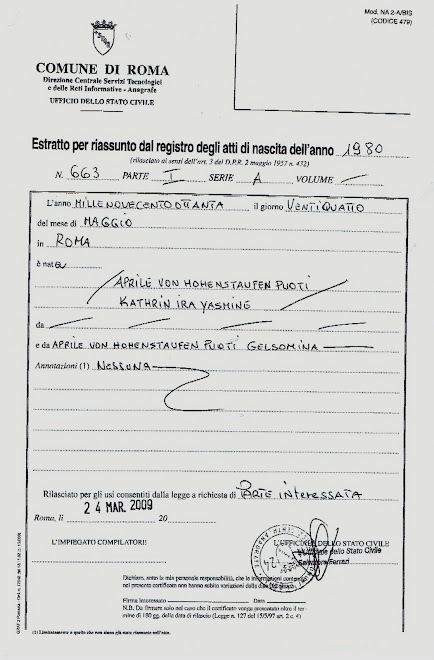A Barbaccia , personaggio pubblico,ed e' di pubblico interesse, rispondiamo che noi continueremo all'infinito, se non risponde alla domanda "se il suo perito Lo Piccolo, sia parente del clan Lo Piccolo!Ci hanno inviato copia di blogg , dove per anni gli storici hanno chiesto a Barbaccia di rispondere se il suo perito araldico Lo Piccolo, come si vocifera ,sia parente del clan Lo Piccolo. Barbaccia e' pirotecnico e va in tilt se gli si fa questa domanda.Fa subito la vittima. Noi alla domanda ,in merito alla richiesta di Barbaccia ,sul cognome della principessa abbiamo fornito prove che i cittadini, aventi doppia cittadinanza , sui documenti stranieri , dove non e' censurato il predicato, facente parte del nome , e'consentito riportarlo anche per la prole,in quanto i figli nati da genitori di doppia cittadinanza, o stranieri,seguono le norme dei paesi da cui provengono. Il predicato preesisiteva al 1908 ed e' quindi parte integrante del cognome.Quindi in Italia , ove presentasse domanda in Tribunale , la trascrizione sarebbe automatica. Se non lo ha fatto e' perche' sarebbe disastroso rinnovare tutte le lauree, iscrizioni ad albi , come cittadina italiana, con la cognomizzazione tradotta del predicato
, che e' presistente al 1908.E' inutile che si attacchi ad errori di battitura della Camera di Commercio per la registrazione del marchio! Essendo cittadina italiana il codice fiscale , segue le norme italiane!E' iscritta ad albi professionali Italiani ed in Italia.Sono stati scritti libri, con prove autografe del Re Vittorio Emanuele che ha ordinato di non metteere in campo il titolo nobiliare degli Aprile von Hohenstaufen !
Per Barbaccia non e' stato possibile, prima perche' non lo e',poi perche' la legge lo consente solo se trattasi ,non di predicato inventato,in questi anni, ma preessitente negli armorali ,al 1920.
E' facolta' degli Aprile von Hohenstaufen Puoti ,trascriverlo o meno in Italia. Ne' c'e' mira per un trono imminente! Non e' escluso che lo facciano!Certamente non perche'debbano soddisfare le incongruenze di Barbaccia!I Barbaccia non possono fregiarsi di un predicato estraneo al loro nome e che non preesisteva al 1908,perche' , tra l'altro i Barbaccia sarebbero semmai Barbatia plebea Gens(Vedi i Barbassi cui insiste di appartenere ) e non Potitia Gens come Boemondo d'Antiochia.Barbaccia non discende poi dagli Antiochia Svevi!
La traduzione in tutte le lingue e'pedissequa! Non e' un Aprile qualsiasi la Principessa , ma di Niphi Nero' ovvero Aprile della Dama dell'Acqua, ovvero Venere, Aprile di Saint Genis, Burey Anjou , Venus vincas o Venere Pota,da cui Pothos i Puoti. E' il Fhur tedesco che traduce il mese di Aprile,ovvero Friius da cui Ex Freya,ovvero Staufer, ovvero Weibil. Avril de Saint Genis!Arma l'aquila Sveva.La principessa non ha bisogno di protesi genealogiche inventate da periti sospetti. chi meno ha piu' ha!Nasce Aprile della Santa progenie Sveva Sicana fonte,von Hohenstaufen e lo proclama il suo nome! E' un nome che si autoproclama nella sintesi agalmonica avita.
Indipendentemente da censure italiane, che non sussistono,all'estero, si potrebbe anche chiamare Aprile von Hohenstaufen de Savoie d'Aoste!Anche Biancamano discendeva da un ramo dell'Avril de Saint Genis! Da codesta Dinastia si nasce Principi e non si e' investiti di titoli principeschi.Persino la diatriba tra i Savoia Aosta e'un non sense!
Vedi Euraldic e Armoriali di Francia e di Bretagne.Barbaccia finge di non capire!
E dai Blogg che ci hanno inviato, si rileva che non ha mai smentito la notizia che Coco millantasse che i cavalierati fossero avallati dalla Principessa, cosa assurda, come la circostanza che il suo socio vantasse che la principessa fosse ambasciatrice , lei vera Regina, del noto falso Re, cosa raccapricciante e falsa.Se ha coraggio Barbaccia dica che non e' vero , dimostri che non e' vero che abbia tentato di farsi adottare da un parente della principessa!
Nessuno puo' togliere alla Principessa Yasmin cio' che gia' ha, per diritto di sangue!Ci hanno provato sguinzi neoborbonici , anche in altri tribunali, ed hanno pagato persino risarcimento danni,e sono rimasti con un palmo di naso!
Saint Traduce Hohen , Genis traduce Staufen!ovvero Avrl de Saint Genis, ovvero Aprile von Hohenstaufen . Abbiamo quindi soddisfato la curiosita' di Barbaccia. Se non lo vuole capire e perche' non gli conviene!Come non conviene alla sua compagna di discredito satanista ,Marina Salvatore, che si ostina , ancora oggi, a non stabilire che la principessa sia nata a Villa di Briano,da cui e'facile risalire, sia al Palazzo dei discendenti di Costantino,ovvero i Puoti von Castrum Komne, Comneno ,sia comunque antenato di Federico II il cui nome primo era Costantino, per la volonta' della madre che discendeva da Rogvald, che significa Potente ovvero Poto,discendente di Re Poto,nipote di Re Desiderio.Dica Barbaccia un si o no:il resto sono ciance per non rispondere!
lunedì 30 marzo 2009
MARINA SALVATORE AFFERMA CHE SOTTO I CAPPUCCI VI E' UN ALTO MAGISTRATO Neoborbonico!
Ai Sensi Autotutela contro diffamazioni, calunnie, falso , intimidazioni di Barbaccia
Il Signor Barbaccia che ha varato falsi ordini dinastici , definito dagli storici falso Re di Svevia colluso in Stalking persecutorio diffamatorio con Marina salvatore

Dati eloquenti su cui riflettere:Pm Siena Firrao(Neoborbonica di famiglia storica borbonica);
Ispettore anticrimine Poggibonsi che porta avanti la querela del definito Falso Re di Svevia Barbaccia :Giuseppe Stramaglia ,originario delle Puglie, neoborbonico, che appare con Salvatore Lanza , responsabile del Movimento Neoborbonico tra gli Ordini illegittimi di Barbaccia. Addetta stampa di Salvatore Lanza e' Marina Salvatore, l'autrice della sconvolgente notizia,che sotto i cappucci via sia un alto magistrato e noi aggiungiamo che ha trscurato anche due donne giudici come si vocifera... probabilmente data, per assicurarsi la propria incolumita'!Marina che da anni dichiarava che Barbaccia fosse solo una patacca, lo chiama "don Paolo" sul suo sito, ove ospita le ingiurie di costui!Fu tra le prime , Marina ,ad annunciare il comunicato di Barbaccia. Marina che da anni conduceva una battaglia di disinformazione sulla principessa Yasmin ed ancora continua sulla Voce Megaride. Il giornalista Olivo,cn Palazzolo , autore di Altra Mafia ed. Rubettino , spiega che un tranquillo,insospettabile geometra di nome Francesco Barbaccia era l'acompagnatore di Provenzano,e capo della famiglia mafiosa di Marine. Uno degli autori spiega che il termine "famiglia Mafiosa ", non s'intende solo unione di clan esterni, ma ad esempio come nella ndrangheta,anche il" gruppo familiare" che difficilmente puo' prescindere dalla "famiglia" .La giornalista Mazzocchi,nel libro "Iddu "speiga che attraverso un Movimento Meridionale Provenzano vuole impadronirsi della Sicilia con l'aiuto di mafia, ndrangheta, servizi segreti deviati,massoneria sporca...
I giornalisti scrivono ,anche attraverso un falso Re!
spunta un libro"Tre Falsi Re di Svevia ",Barbaccia, Caspis, Calabria.editore Pamom,autore Pelliccioni di Poli, che narra della inconsistenza delle pretese di costoro, che sono ricorsi prima a farsi adottare da un certo Caspis, risultato fasullo, poi, di punto in bianco nobilitatosi con una perizia. Tra i due scoppiala guerra.Barbaccia viene condannato per aver diffamato Calabria!
Barbaccia, ostenta la perizia di un certo Lo Piccolo, dell'Istituto Cimino di Palermo. Associati a Iagi, ancora sui loro blogg, insinuano che l'Istituto Cimino di Palermo sia stato smantellato daglianni 60 e poi in odor di mafia...
Intanto dalla Stampa emerge che Cossiga rifiuta una onorificenza dell'Ordine Costantiniano del Borbone, accusandolo di essersi alleato con mafia,ndrangheta, servizi segreti deviati e massoneria sporca, pur di riconquistare il trono delle due Sicilie; Insinua anche sul suo ruolo di Presidente onorario della Banca del Sud! ...
Le querele del barbaccia erano sempre state archiviate,ma stranamente, prese in "considerazione " dalle indagini svolte dal suo "Gran Priore in patacche", l'ispettore Stramaglia, neoborbonico ,in coincidenza del cambio ai vertici del Tribunale di Siena che vede ,come nuovo Procuratore, un ex candidato al "Movimento Meridionale":trattasi dell'ex "PRETORE CIRCONDARIALE " Tito Salerno,nato a Stilo(Rc).Nella Locride si vocifera, sia Neoborbonico d'oc!Intanto il Processo e' affidato ad altra neoborbonica:Firrao! La stessa incrimina una pagina di assoluta correttezza , come verificabile:http://www.federicostupormundi.it/a_proposito_dei_d.htm
sito intestato ad una delle principesse Hohenstaufen, che pero' comunica al Garante ed all'associazione federiciana che non puo' gestire un sito amatoriale araldico in quanto impegnata professionalmente,anche se Presidente Onorario,dopo averlo passato alla madre, come verificabile:Anche la madre scrive al garante e all'associazione che non puo'occuparsene , perche'spesso all'estero e passa la gestione ad un anziano aristocratico che in verita' ha sempre vigilato sulla correttezza del linguaggio, come verificabile!non vi e'inteto diffamatorio,nella pagina ,bensi' di rettifica dovrosa, trattandosi di vicenda di pubblico interesse. Barbaccia aveva tentato di confondersi con i veri Hohenstaufen ed un socio millantava che i titoli che erogavano fossero ratificati dalla principessa : cosa assolutamente falsa!Barbaccia ,inoltre ,affermava falsamente di essere stato riconosciuto dal Ministero Interno , che,invece , lo smentisce : attraverso una lettera sul sito pubblicata.Era cosa doverosa ,trattandosi di "pubblico interesse " (Barbaccia varava principati e si presentava alle elezioni)prendere le distanze da chi tentava di confondersi con ladinastiata Aprile von Hohenstaufen Puoti,al punto da farsi fiancheggiare da una certa Dea D'Aprile,semplice omonima, che pero' efficacemente dava ad intendere falsamente che D'Aprile fosse alleata del Falso Re!
Nonostante si protesti che il server della homepage sia a Milano, Siena risponde invece da luogo sconosciuto, per accaparrarsene la competenza!Erano anni di Stalking diffamatorio del Barbaccia che seguiva pedissequamentecon minacce intimidazioni la legittima erede che non lo aveva riconosciuto,al punto che sui blogg, annota come verificabile,che" se fosse stata intelligente sarebbe giunta ad un accordo!" Gli Storici protestano:accordo con chi?Una Patacca ,parente di appartenenti al clan Provenzano ,forte della perizia di un Lo Piccolo? Ma la Pm Firrao non indaga se Lo Piccolo sia del clan Lo Piccolo, ma vuol chiedere a Barbaccia se sia parente di Lo Piccolo. Intanto i periti telematici che hanno individuato un sistema wi fi e wi max, non escluso satellitare,sul server in oggetto, stranamente se la rifilano entrambi, dicono,"infortunati ad un piede".Infatti, da quando il sisma aveva reso il castello inagibile, le associazioni erano diffuse all'esterno.
Inoltre,il Pm invece di leggere sulla pagina che si afferma semplicemente la verita' , ossia che Barbaccia sia parente di famiglia appartenente a Gotha mafia , clan Badalamenti, Brusca, Riina, Provenzano(come da link di atti giudiziari), scrive ,cosa assolutamente falsa che la pagina dica che Barbaccia sia appartenente al clan Provenzano.Veramente ,a questo punto, se qualcuno lo sospettava, vengono fuori sempre piu' certezze, perche'da ben quattro querele presentate dai legali della principessa Yasmin vien fuori che vi erano intimidazioni e minacce pluriennali, stalking e persecuzione diffamatoria, presunti plurimi danneggiamenti, e devastazioni, furti,incluso un presunto tentativo di Barbaccia di farsi adottare, attraverso intermediari (ne ha la mania? ...) da parte di un parente della Principessa Yasmin,con la scusa di essere interessato al marchio! L'anziano aristocratico, quando sospetta che trattasi di un raggiro confida alla parente che era una truffa ed intende denunciare "che sospetta che dietro vi fosse Barbaccia" . Fa ascoltare una sua telefonata ad una donna dell'Est che spacciano per principessa, di nome Lali.Ma la principessa Yasmin ignorava che la convivente di Barbaccia fosse ucraina e si chiamasse Lali.Quindi non creo' alcuna sospetta connessione.
L'anziano aristocratico che puntiglioso e preciso voleva venire a capo della vicenda ,viene intimidito ,minacciato da persone sconosciute e subisce alcune rappresaglie! Su tali episodi vi e' il segreto istruttorio, come su tutte le vicende connesse minacce, intimidazioni pluriennali devastazioni presunte del Barbaccia!"Vieni con noi che ti daremo vendetta" , soffio'all'orecchio del Barbaccia il club dei satanisti neoborbonici, che passa con anelli privilegiati anche attraverso l'asse del vertice Regione Marche e tribunale Camerino...poiche' Barbaccia quotidianamente , travisava i fatti sui siti, per alimentare le inimicizie della Principessa.Ecco l'ibrido connubbio tra un magistrato neborbone , sotto i cappucci rossi, che ha derubato del pacchetto azionario e di oltre 250 miiliardi di spettanze dalla multinazionale la prof Aprile von Hohenstaufen Puoti Yasmin- Un accanimento giudiziario dello stesso magistrato fa comprendere che lo stesso vuole impadronirsi, con un bliitz del castello della Principessa Yasmin,proprio attraverso accanimento iniquo di Pm che in quel dei sibillini costituiscono la protesi di riti satanici.Dove sono finiti i miliardi stanziati dallo Stato per il castello della principessa Yasmin? La regione Marche tace...
Ma cosa vi e'a monte ?I Borboni temono la principessa Yasmin,in quanto per linea di primogenitura discende da Costantino il Grande, ed ecco perche' Marina disinforma sul luogo di nascita che e' Villa di Briano ed il palazzo in cui e'nata e' dei Principi Pallavicini Puoti di Castrum Komne detti des Poto a despota Comneno Jerontes o Paleologo, dacui discende.Dunque non solo la donazione di Costantino era falsa, ma anche quella al Farnese,da cui prendono diritto gli Ordini Costantiniani del Borbone(un colossale business).Non solo, ma documenti piu' recenti fanno emergere che Manfredi abbia soffocato il padre, per averlo escluso al trono, e che Federico II avesse gia'stabilito nei prologhi di Worms, che chi disonora o uccide il padre, perda ogni diritto al trono e benefici!I Borboni temono la principessa Yamin che considerano ostacolo, per i diritti di prelazione !Barbaccia e' solo uno strumento per combattere la legittima erede, perche' per smantellare un falso Re come Barbaccia,bastano pochi secondi! La Mafia non potrebbe del resto,per salvarsi la faccia, puntare su una clamorosa patacca,quindi punterebbe sul Borbone ncessariamente?Ecco perche' i giochi di Barbaccia sono veramente finiti!
Il Signor Barbaccia che ha varato falsi ordini dinastici , definito dagli storici falso Re di Svevia colluso in Stalking persecutorio diffamatorio con Marina salvatore

Dati eloquenti su cui riflettere:Pm Siena Firrao(Neoborbonica di famiglia storica borbonica);
Ispettore anticrimine Poggibonsi che porta avanti la querela del definito Falso Re di Svevia Barbaccia :Giuseppe Stramaglia ,originario delle Puglie, neoborbonico, che appare con Salvatore Lanza , responsabile del Movimento Neoborbonico tra gli Ordini illegittimi di Barbaccia. Addetta stampa di Salvatore Lanza e' Marina Salvatore, l'autrice della sconvolgente notizia,che sotto i cappucci via sia un alto magistrato e noi aggiungiamo che ha trscurato anche due donne giudici come si vocifera... probabilmente data, per assicurarsi la propria incolumita'!Marina che da anni dichiarava che Barbaccia fosse solo una patacca, lo chiama "don Paolo" sul suo sito, ove ospita le ingiurie di costui!Fu tra le prime , Marina ,ad annunciare il comunicato di Barbaccia. Marina che da anni conduceva una battaglia di disinformazione sulla principessa Yasmin ed ancora continua sulla Voce Megaride. Il giornalista Olivo,cn Palazzolo , autore di Altra Mafia ed. Rubettino , spiega che un tranquillo,insospettabile geometra di nome Francesco Barbaccia era l'acompagnatore di Provenzano,e capo della famiglia mafiosa di Marine. Uno degli autori spiega che il termine "famiglia Mafiosa ", non s'intende solo unione di clan esterni, ma ad esempio come nella ndrangheta,anche il" gruppo familiare" che difficilmente puo' prescindere dalla "famiglia" .La giornalista Mazzocchi,nel libro "Iddu "speiga che attraverso un Movimento Meridionale Provenzano vuole impadronirsi della Sicilia con l'aiuto di mafia, ndrangheta, servizi segreti deviati,massoneria sporca...
I giornalisti scrivono ,anche attraverso un falso Re!
spunta un libro"Tre Falsi Re di Svevia ",Barbaccia, Caspis, Calabria.editore Pamom,autore Pelliccioni di Poli, che narra della inconsistenza delle pretese di costoro, che sono ricorsi prima a farsi adottare da un certo Caspis, risultato fasullo, poi, di punto in bianco nobilitatosi con una perizia. Tra i due scoppiala guerra.Barbaccia viene condannato per aver diffamato Calabria!
Barbaccia, ostenta la perizia di un certo Lo Piccolo, dell'Istituto Cimino di Palermo. Associati a Iagi, ancora sui loro blogg, insinuano che l'Istituto Cimino di Palermo sia stato smantellato daglianni 60 e poi in odor di mafia...
Intanto dalla Stampa emerge che Cossiga rifiuta una onorificenza dell'Ordine Costantiniano del Borbone, accusandolo di essersi alleato con mafia,ndrangheta, servizi segreti deviati e massoneria sporca, pur di riconquistare il trono delle due Sicilie; Insinua anche sul suo ruolo di Presidente onorario della Banca del Sud! ...
Le querele del barbaccia erano sempre state archiviate,ma stranamente, prese in "considerazione " dalle indagini svolte dal suo "Gran Priore in patacche", l'ispettore Stramaglia, neoborbonico ,in coincidenza del cambio ai vertici del Tribunale di Siena che vede ,come nuovo Procuratore, un ex candidato al "Movimento Meridionale":trattasi dell'ex "PRETORE CIRCONDARIALE " Tito Salerno,nato a Stilo(Rc).Nella Locride si vocifera, sia Neoborbonico d'oc!Intanto il Processo e' affidato ad altra neoborbonica:Firrao! La stessa incrimina una pagina di assoluta correttezza , come verificabile:http://www.federicostupormundi.it/a_proposito_dei_d.htm
sito intestato ad una delle principesse Hohenstaufen, che pero' comunica al Garante ed all'associazione federiciana che non puo' gestire un sito amatoriale araldico in quanto impegnata professionalmente,anche se Presidente Onorario,dopo averlo passato alla madre, come verificabile:Anche la madre scrive al garante e all'associazione che non puo'occuparsene , perche'spesso all'estero e passa la gestione ad un anziano aristocratico che in verita' ha sempre vigilato sulla correttezza del linguaggio, come verificabile!non vi e'inteto diffamatorio,nella pagina ,bensi' di rettifica dovrosa, trattandosi di vicenda di pubblico interesse. Barbaccia aveva tentato di confondersi con i veri Hohenstaufen ed un socio millantava che i titoli che erogavano fossero ratificati dalla principessa : cosa assolutamente falsa!Barbaccia ,inoltre ,affermava falsamente di essere stato riconosciuto dal Ministero Interno , che,invece , lo smentisce : attraverso una lettera sul sito pubblicata.Era cosa doverosa ,trattandosi di "pubblico interesse " (Barbaccia varava principati e si presentava alle elezioni)prendere le distanze da chi tentava di confondersi con ladinastiata Aprile von Hohenstaufen Puoti,al punto da farsi fiancheggiare da una certa Dea D'Aprile,semplice omonima, che pero' efficacemente dava ad intendere falsamente che D'Aprile fosse alleata del Falso Re!
Nonostante si protesti che il server della homepage sia a Milano, Siena risponde invece da luogo sconosciuto, per accaparrarsene la competenza!Erano anni di Stalking diffamatorio del Barbaccia che seguiva pedissequamentecon minacce intimidazioni la legittima erede che non lo aveva riconosciuto,al punto che sui blogg, annota come verificabile,che" se fosse stata intelligente sarebbe giunta ad un accordo!" Gli Storici protestano:accordo con chi?Una Patacca ,parente di appartenenti al clan Provenzano ,forte della perizia di un Lo Piccolo? Ma la Pm Firrao non indaga se Lo Piccolo sia del clan Lo Piccolo, ma vuol chiedere a Barbaccia se sia parente di Lo Piccolo. Intanto i periti telematici che hanno individuato un sistema wi fi e wi max, non escluso satellitare,sul server in oggetto, stranamente se la rifilano entrambi, dicono,"infortunati ad un piede".Infatti, da quando il sisma aveva reso il castello inagibile, le associazioni erano diffuse all'esterno.
Inoltre,il Pm invece di leggere sulla pagina che si afferma semplicemente la verita' , ossia che Barbaccia sia parente di famiglia appartenente a Gotha mafia , clan Badalamenti, Brusca, Riina, Provenzano(come da link di atti giudiziari), scrive ,cosa assolutamente falsa che la pagina dica che Barbaccia sia appartenente al clan Provenzano.Veramente ,a questo punto, se qualcuno lo sospettava, vengono fuori sempre piu' certezze, perche'da ben quattro querele presentate dai legali della principessa Yasmin vien fuori che vi erano intimidazioni e minacce pluriennali, stalking e persecuzione diffamatoria, presunti plurimi danneggiamenti, e devastazioni, furti,incluso un presunto tentativo di Barbaccia di farsi adottare, attraverso intermediari (ne ha la mania? ...) da parte di un parente della Principessa Yasmin,con la scusa di essere interessato al marchio! L'anziano aristocratico, quando sospetta che trattasi di un raggiro confida alla parente che era una truffa ed intende denunciare "che sospetta che dietro vi fosse Barbaccia" . Fa ascoltare una sua telefonata ad una donna dell'Est che spacciano per principessa, di nome Lali.Ma la principessa Yasmin ignorava che la convivente di Barbaccia fosse ucraina e si chiamasse Lali.Quindi non creo' alcuna sospetta connessione.
L'anziano aristocratico che puntiglioso e preciso voleva venire a capo della vicenda ,viene intimidito ,minacciato da persone sconosciute e subisce alcune rappresaglie! Su tali episodi vi e' il segreto istruttorio, come su tutte le vicende connesse minacce, intimidazioni pluriennali devastazioni presunte del Barbaccia!"Vieni con noi che ti daremo vendetta" , soffio'all'orecchio del Barbaccia il club dei satanisti neoborbonici, che passa con anelli privilegiati anche attraverso l'asse del vertice Regione Marche e tribunale Camerino...poiche' Barbaccia quotidianamente , travisava i fatti sui siti, per alimentare le inimicizie della Principessa.Ecco l'ibrido connubbio tra un magistrato neborbone , sotto i cappucci rossi, che ha derubato del pacchetto azionario e di oltre 250 miiliardi di spettanze dalla multinazionale la prof Aprile von Hohenstaufen Puoti Yasmin- Un accanimento giudiziario dello stesso magistrato fa comprendere che lo stesso vuole impadronirsi, con un bliitz del castello della Principessa Yasmin,proprio attraverso accanimento iniquo di Pm che in quel dei sibillini costituiscono la protesi di riti satanici.Dove sono finiti i miliardi stanziati dallo Stato per il castello della principessa Yasmin? La regione Marche tace...
Ma cosa vi e'a monte ?I Borboni temono la principessa Yasmin,in quanto per linea di primogenitura discende da Costantino il Grande, ed ecco perche' Marina disinforma sul luogo di nascita che e' Villa di Briano ed il palazzo in cui e'nata e' dei Principi Pallavicini Puoti di Castrum Komne detti des Poto a despota Comneno Jerontes o Paleologo, dacui discende.Dunque non solo la donazione di Costantino era falsa, ma anche quella al Farnese,da cui prendono diritto gli Ordini Costantiniani del Borbone(un colossale business).Non solo, ma documenti piu' recenti fanno emergere che Manfredi abbia soffocato il padre, per averlo escluso al trono, e che Federico II avesse gia'stabilito nei prologhi di Worms, che chi disonora o uccide il padre, perda ogni diritto al trono e benefici!I Borboni temono la principessa Yamin che considerano ostacolo, per i diritti di prelazione !Barbaccia e' solo uno strumento per combattere la legittima erede, perche' per smantellare un falso Re come Barbaccia,bastano pochi secondi! La Mafia non potrebbe del resto,per salvarsi la faccia, puntare su una clamorosa patacca,quindi punterebbe sul Borbone ncessariamente?Ecco perche' i giochi di Barbaccia sono veramente finiti!
Tace Barbaccia: e'caduta la maschera!
Come avete notato, Barbaccia non risponde alla domanda se il suo perito araldico Lo Piccolo, appartenga al clan lo Piccolo Provenzano...Fu dunque profetessa la giornalista Silvana Mazzocchi, nellibro "Iddu"?
Forse il Barbaccia e' troppo fiducioso di chi ha gia' provveduto ad evitargli l'imbarazzante risposta. Ma ormai"L'accademia dei cappucci rossi neoborbonica in odor di satana e di clan e' smantellata" ...
Forse il Barbaccia e' troppo fiducioso di chi ha gia' provveduto ad evitargli l'imbarazzante risposta. Ma ormai"L'accademia dei cappucci rossi neoborbonica in odor di satana e di clan e' smantellata" ...
sabato 28 marzo 2009
Querelato , in concorso Barbaccia , per abuso di titoli e usurpazione di cognome !
sabato 28 marzo 2009
Querelati per presunto concorso in plurimi reati gli adepti di Barbaccia
In relazione al link creato dal Blog del Barbaccia collegato al nostro Blog, e' evidente che egli si rivolga ai suoi adepti, i quali,essendo in corso 5 querele contro Barbaccia in concorso, per plurimi presunti reati, sono diffidati dal rendersi complici ,in concorso, su un reato che di certo non e' presunto,ma reale:usurpazione del cognome Hohenstaufen !
Sia che Barbaccia si chiami Barbaccia o abbia aggiunta Viscardi, Barbaccia e' semplicemente Barbacca e Viscardi e' il cognome diffusissimo che significa solo Astuto. Ne' Barbaccia , ne' Viscardi , sono degli Altavilla o Hohenstaufen .Nessun Viscardi al mondo puo' pretendere di essere Hohenstaufen ! E poi, un aggettivo, un soprannome ,non autorizza a ipotizzare che fossero la stesa linea. Allora anche la famiglia Astuto, che si traduce Wiscard, potrebbe pretendere di essere Altavilla. Di furbi e' pieno ilmondo ed il tentativo di Barbaccia di traslare il predicato Hohenstaufen da Barbaccia, perche' non regge piu', a Viscardi, e' semplicemente di astuzia puerile!Ne' Viscardi sono Altavilla, ne' Barbaccia sono Hohentaufen!
Barbaccia non e' un Antiochia, perche' il cognome d'Antiochia esiste ed e' vitale in provincia di Siracusa , Ragusa, Catania!Il dr. Vincenzo d'Antiochia, come documentabile, ha affermato che, da sempre ,nella tradizione della sua famiglia vi e' la consapevolezza e tradizione di discendere da Federico d'Antiochia.E' consapevole ,ma non se ne cura che al massimoavrebbe diritto, secondoil testamento di Federico II al rango di Conte del Molise , Celano!
Altri Antiochia negli Usa ne sono consapevoli e dimostrano che il cognome non e'mai mutato. Anche il poliziotto ucciso dalla mafa Roberto Antiochia discendeva da un ramo di Federico d'Antiochia!Guelfi di Camajani,di firenze, Presidente dell'Istituto genealogico Araldico, come documentabile, ha dichiarato al dipartimento storico araldico della Presidenza del Consiglio che lo ha contattato che Barbaccia non e' assolutamente un discendente del Barbarossa , ne' ramo svevo Antiocheno, unitamene a don Mariano d'Otranto dell'Istituto Spreti I due concordano con quanto scritto , nel saggio Tre Falsi Re di Svevia(Barbaccia, Caspis, Calabria)ed. Pamom a cura del prof Pelliccioni di poli. Iagi ne pubblica recensione e, per evitare polemiche con i tre, afferma che concorda con quanto scrive l'autore! Non solo,ma un blog di Iagi, allude alla circostanza che l'Istituto Cimino,di Palermo, sia stato smantellato negli anni 60 e poi in odor di mafia...quindi sostanzialmete gli storici quando alludevano alla parentela di Lo Piccolo,con i Lo Piccolo,e che il perito araldico di Barbaccia, fosse parente di.... riscontravano un dato storico veritiero, ossia che Barbaccia che e' parente di famiglia appartenente al clan Provenzano, sia stato nobilitato da una contestatissima perizia di un lo Piccolo!Il perito Lo Piccolo non ha mai smentito parentela con la famiglia del clan lo Piccolo!
Appurato che il cognome Barbaccia, presisteva ed era assolutamente estraneo ai d'Antiochia( che e' Gens Potitia , e non Barbatia plebea ), visto che il cognome von Hohenstaufen e' un predicato nobiliare patrimonio e traduzione del nome provenzale Avril equivale a Staufer (da Fhur tedesco , Friius provenzale, Ex Freya latino, da cui Staufer ou Aprilis );appurato che Saint Genis, traduce Saint(Hohen) Staufen(Genis) e che tale cognome e' presente negli armoriali di Francia, inghilterra, nei pastorali, nei crittogrammi e lapicidi, documenti cistercensi e Archivi di Curlandia, non solo. ma negli archivi di stato lettera H=hohenstaufen dei Cardinali Santacroce, testimoniato da Stemmi,documenti, passaporti, atti anmnestici e certificati di battesii, unitamente al motto e l'arma dell'aquila sveva.Tutto cio' premesso ne discende che il predicato nobiliare Hohenstaufen che Traduce Divina Staffa oSant Genis Sancta Propago, Altezza Divina (Rama Theo, da Arimthea) e che tale predicato preesisteva al 1920 , in quanto gli armoriali di Francia de l'Enciclopedia delle Famiglie Nobili di Francia ne testimoniano la presistenza,nel 1900, ne discende che Barbaccia pratichi non solo il reato di falso, in quanto Barbaccia non discende dall'Antiochia, ma usurpazione del cognomeHohenstaufen, in quanto parte integrante legittimo del nome Aprile von Hohenstaufen , di cui e' attributo nobiliare in esclusivo. Quindi Barbaccia non puo' per duplici motivi usare il cognome o predicato cognomizzabile ,ma solo per gli Aprilis Sveva Sicana Fonte ,che non gli appartiene! Per assurdo, anche se fosse un Antiochia ,e non lo e', potrebbe solo chiedere ai d'Antiochia, di usare il predicato di Antiochia .Pertanto gli iscritti, ed adepti di Barbaccia, gia' denunciti , sono diffidati dal persistere nel rendersi complici di reato di uso indebito,abuso ed usurpazione i titoli e nome von hHohenstaufen ,così anche eventuali parenti del Barbaccia .Hohenstaufen e' ,tra l'altro, marchio registrato ed esclusivo, e la legittima prosapia von Hohenstaufen non intende piu' consentire ad usurpatori o terzi di usare un cognome predicato, patrimonio esclusivo dell Dinastia Aprile von Hohenstaufen Puoti Macedonio Veruli Saxe Coburgo Gotha von Hohenzollern!Coloro che persistono nel rendersi complice , anche solo iscrivendosi o partecipando ad iniziative che si fregiano di attributi agalmonici , storici, patrimonio esclusivo dinastico familiare degli Aprile von Hohenstaufen , si rendono complici consapevolmente in reati continuati
reati connessi e che discendono da tale usurpazione. Si diffidono gli iscritti e seguaci del Barbaccia dal rendersi complici di palese usurpazione del cognome , ravvisando in tale comportamento illecito gli estremi di reati in presunto concorso , per finalita'su cui indagare. (Eurogothanews)
Querelati per presunto concorso in plurimi reati gli adepti di Barbaccia
In relazione al link creato dal Blog del Barbaccia collegato al nostro Blog, e' evidente che egli si rivolga ai suoi adepti, i quali,essendo in corso 5 querele contro Barbaccia in concorso, per plurimi presunti reati, sono diffidati dal rendersi complici ,in concorso, su un reato che di certo non e' presunto,ma reale:usurpazione del cognome Hohenstaufen !
Sia che Barbaccia si chiami Barbaccia o abbia aggiunta Viscardi, Barbaccia e' semplicemente Barbacca e Viscardi e' il cognome diffusissimo che significa solo Astuto. Ne' Barbaccia , ne' Viscardi , sono degli Altavilla o Hohenstaufen .Nessun Viscardi al mondo puo' pretendere di essere Hohenstaufen ! E poi, un aggettivo, un soprannome ,non autorizza a ipotizzare che fossero la stesa linea. Allora anche la famiglia Astuto, che si traduce Wiscard, potrebbe pretendere di essere Altavilla. Di furbi e' pieno ilmondo ed il tentativo di Barbaccia di traslare il predicato Hohenstaufen da Barbaccia, perche' non regge piu', a Viscardi, e' semplicemente di astuzia puerile!Ne' Viscardi sono Altavilla, ne' Barbaccia sono Hohentaufen!
Barbaccia non e' un Antiochia, perche' il cognome d'Antiochia esiste ed e' vitale in provincia di Siracusa , Ragusa, Catania!Il dr. Vincenzo d'Antiochia, come documentabile, ha affermato che, da sempre ,nella tradizione della sua famiglia vi e' la consapevolezza e tradizione di discendere da Federico d'Antiochia.E' consapevole ,ma non se ne cura che al massimoavrebbe diritto, secondoil testamento di Federico II al rango di Conte del Molise , Celano!
Altri Antiochia negli Usa ne sono consapevoli e dimostrano che il cognome non e'mai mutato. Anche il poliziotto ucciso dalla mafa Roberto Antiochia discendeva da un ramo di Federico d'Antiochia!Guelfi di Camajani,di firenze, Presidente dell'Istituto genealogico Araldico, come documentabile, ha dichiarato al dipartimento storico araldico della Presidenza del Consiglio che lo ha contattato che Barbaccia non e' assolutamente un discendente del Barbarossa , ne' ramo svevo Antiocheno, unitamene a don Mariano d'Otranto dell'Istituto Spreti I due concordano con quanto scritto , nel saggio Tre Falsi Re di Svevia(Barbaccia, Caspis, Calabria)ed. Pamom a cura del prof Pelliccioni di poli. Iagi ne pubblica recensione e, per evitare polemiche con i tre, afferma che concorda con quanto scrive l'autore! Non solo,ma un blog di Iagi, allude alla circostanza che l'Istituto Cimino,di Palermo, sia stato smantellato negli anni 60 e poi in odor di mafia...quindi sostanzialmete gli storici quando alludevano alla parentela di Lo Piccolo,con i Lo Piccolo,e che il perito araldico di Barbaccia, fosse parente di.... riscontravano un dato storico veritiero, ossia che Barbaccia che e' parente di famiglia appartenente al clan Provenzano, sia stato nobilitato da una contestatissima perizia di un lo Piccolo!Il perito Lo Piccolo non ha mai smentito parentela con la famiglia del clan lo Piccolo!
Appurato che il cognome Barbaccia, presisteva ed era assolutamente estraneo ai d'Antiochia( che e' Gens Potitia , e non Barbatia plebea ), visto che il cognome von Hohenstaufen e' un predicato nobiliare patrimonio e traduzione del nome provenzale Avril equivale a Staufer (da Fhur tedesco , Friius provenzale, Ex Freya latino, da cui Staufer ou Aprilis );appurato che Saint Genis, traduce Saint(Hohen) Staufen(Genis) e che tale cognome e' presente negli armoriali di Francia, inghilterra, nei pastorali, nei crittogrammi e lapicidi, documenti cistercensi e Archivi di Curlandia, non solo. ma negli archivi di stato lettera H=hohenstaufen dei Cardinali Santacroce, testimoniato da Stemmi,documenti, passaporti, atti anmnestici e certificati di battesii, unitamente al motto e l'arma dell'aquila sveva.Tutto cio' premesso ne discende che il predicato nobiliare Hohenstaufen che Traduce Divina Staffa oSant Genis Sancta Propago, Altezza Divina (Rama Theo, da Arimthea) e che tale predicato preesisteva al 1920 , in quanto gli armoriali di Francia de l'Enciclopedia delle Famiglie Nobili di Francia ne testimoniano la presistenza,nel 1900, ne discende che Barbaccia pratichi non solo il reato di falso, in quanto Barbaccia non discende dall'Antiochia, ma usurpazione del cognomeHohenstaufen, in quanto parte integrante legittimo del nome Aprile von Hohenstaufen , di cui e' attributo nobiliare in esclusivo. Quindi Barbaccia non puo' per duplici motivi usare il cognome o predicato cognomizzabile ,ma solo per gli Aprilis Sveva Sicana Fonte ,che non gli appartiene! Per assurdo, anche se fosse un Antiochia ,e non lo e', potrebbe solo chiedere ai d'Antiochia, di usare il predicato di Antiochia .Pertanto gli iscritti, ed adepti di Barbaccia, gia' denunciti , sono diffidati dal persistere nel rendersi complici di reato di uso indebito,abuso ed usurpazione i titoli e nome von hHohenstaufen ,così anche eventuali parenti del Barbaccia .Hohenstaufen e' ,tra l'altro, marchio registrato ed esclusivo, e la legittima prosapia von Hohenstaufen non intende piu' consentire ad usurpatori o terzi di usare un cognome predicato, patrimonio esclusivo dell Dinastia Aprile von Hohenstaufen Puoti Macedonio Veruli Saxe Coburgo Gotha von Hohenzollern!Coloro che persistono nel rendersi complice , anche solo iscrivendosi o partecipando ad iniziative che si fregiano di attributi agalmonici , storici, patrimonio esclusivo dinastico familiare degli Aprile von Hohenstaufen , si rendono complici consapevolmente in reati continuati
reati connessi e che discendono da tale usurpazione. Si diffidono gli iscritti e seguaci del Barbaccia dal rendersi complici di palese usurpazione del cognome , ravvisando in tale comportamento illecito gli estremi di reati in presunto concorso , per finalita'su cui indagare. (Eurogothanews)
venerdì 27 marzo 2009
Il Ministero degli Esteri dichiara fasulli gli OrdiniTeutonici Di Barbaccia
Heraldry Veruli Saxe Coburgo Gotha
Il Supremo Magistero Ordine Dinastico Cavalieri Teutoni e' patrimonio esclusivo in perpetuum dei discendenti del Founder Principe Haenricus Potus von Walpotus e dei discendenti diretti di Federico II ed Isabella d'Inghilterra ossia I Principi Aprile von Hohenstaufen Puoti von Comneno Paleologo Hohenzollern Veruli Saxe Coburgo Gotha Macedonio. L'Ordine e' stato concesso in Fidecommisso dalla Principessa Yasmin, al Supremo Consiglio Usa e a Sua Maesta' Elisabetta II.
Il Supremo Magistero Ordine Dinastico Cavalieri Teutoni e' patrimonio esclusivo in perpetuum dei discendenti del Founder Principe Haenricus Potus von Walpotus e dei discendenti diretti di Federico II ed Isabella d'Inghilterra ossia I Principi Aprile von Hohenstaufen Puoti von Comneno Paleologo Hohenzollern Veruli Saxe Coburgo Gotha Macedonio. L'Ordine e' stato concesso in Fidecommisso dalla Principessa Yasmin, al Supremo Consiglio Usa e a Sua Maesta' Elisabetta II.
Hochmeister of Teutonic Order

The Imperial Order of The
Teutonic Knights of St. Mary's
Hospital in Jerusalem
of Haenricus Potus von Valpotus Dynasty Puoti von Valpotus Aprile von Hohenstaufen Veruli Saxe Coburgo Gotha
Ordo domus Sancte Marie
Theutonicorum Ierosolimitanorum
The Knights and Brothers of the German
Houses at Beloved Lady of Jerusalem
_____________
Willkommen auf der Homepage des Deutschen Ordens ,
Brüder vom Deutschen Haus St. Mariens in Jerusalem .
Welcome to The Official Website of The Imperial
Teutonic Knights of Germany, The German Order
of the Hospital of the Virgin Mary in Jerusalem .
____________
Latin : Ordo domus Sanctæ Mariæ
Theutonicorum Ierosolimitanorum,
"Order of the Teutonic House of Mary
in Jerusalem"; Ordo Teutonicus, "German Order"
German : Deutscher Orden, "German Order";
officially Orden der Brüder vom Deutschen
Haus St. Mariens in Jerusalem, "Order of
the Brothers of the German House of St.
Mary in Jerusalem"
Belarusian : Тэўтонскі ордэн, "Teutonic Order"
Danish: Tyske Orden, "German Order"
Dutch : Duitse Orde, "German Order"
Croatian : Teutonski Red, "Teutonic Order"
Estonian : Saksa Ordu, "German Order"
Finnish : Saksalainen ritarikunta, "German Order"
French : Chevaliers Teutoniques, "Teutonic Knights"
Hebrew: המסדר הטבטוני, "The Teutonic Order"
Hungarian : Német Lovagrend, "German Knighthood"
Latvian: Vācu ordenis, "German Order"
Lithuanian : Kryžiuočių Ordinas, "Order of Crusaders"
Norwegian : (bokmål): Tyske Orden
Norwegian : (nynorsk): Tyske Riddarordenen
Portuguese: Ordem dos Cavaleiros Teutônicos,
"Order of the Teutonic Knights"
Polish : Zakon Krzyżacki, "Order of the Crossbearers"
Romanian : Ordinul Cavalerilor Teutoni,
"Teutonic Knights Order"
Russian : Тевтонский орден, "Teutonic Order"
Slovenian : Križniki, "Crossbearers"
Slovak : Rád nemeckých rytierov
Serbian : Тевтонски ред - Tevtonski red, "Teutonic Order"
Swedish : Tyska orden, "German Order"
Swiss German : Tütsche Ordä, "German Order"
Turkish: Töton Şövalyeleri, "Teutonic Knights"
Italian : Ordine Teutonico, "Teutonic Order"
Spanish : Orden Teutónica, "Teutonic Order"
Japanese : ドイツ騎士団 (doitsu-kishidan),
"Knights of Germany"
___________
(Above)
The Armorial Bearings of The
60th Chivalric Hochmeister
of Teutonic Order of Germany
His Imperial and Royal Highness
Prinz Karl Friedrich von Deutschland
de jure Charles VIII I.R.
(Above)
The official Seal of The Knights of Teutonic
Order of Saint Marys Hospital in Jerusalem
_____________________________________________
THE HISTORY OF THE TEUTONIC ORDER OF
SAINT MARYS HOSPITAL IN JERUSALEM
_____________________________________________
The Teutonic Order, as a new institution was confirmed by the German Crusader leader, Duke Frederick of Swabia, on November 19th, in the year 1190 and with the capture of Acre, the founders of the hospital were given a permanent site in the city. Pope Clement III confirmed this body as the "fratrum Theutonicorum ecclesiae S. Mariae Hiersolymitanae" by the Bull Quotiens postulatur of February 6, 1191 and, within a few years, the Order had developed as a Religious Military institution comparable to the Hospitallers and Templars, although initially subordinate to the Master of the Hospital. This subordination was confirmed in the Bull Dilecti filii of Pope Gregory IX of January 12, 1240 addressed to the "fratres hospitalis S. Mariae Theutonicorum in Accon". The distinct German character of this new Hospitaller Order and the protection given to it by the Emperor and German rulers, enabled it to gradually assert a de facto independence from the Order of Saint John. The first Imperial grant came from Otto IV who gave the Order his protection on May 10, 1213 and this was followed almost immediately by a further confirmation by Frederick II on September 5, 1214. These Imperial confirmations each treated the Teutonic knights as independent from the Hospitallers. By the middle of the fourteenth century this independence was acknowledged by the Holy See.
Some forty knights were received into the new Order at its foundation by the King of Jerusalem and Frederick of Swabia, who selected their first Master in the name of the Pope and Emperor. The knights of the new confraternity had to be of German birth (although this rule was occasionally relaxed), a unique requirement among the Crusader Orders founded in the Holy Land. They were drawn predominately from the noble or knightly class, although this latter obligation was not formally incorporated into the rule until much later. Their blue mantle, charged with a black cross, was worn over a white tunic, a uniform recognized by the Patriarch of Jerusalem and confirmed by the Pope in 1211. The waves of German knights and pilgrims who followed the Third Crusade brought considerable wealth to the new German Hospital as well as recruits. This enabled the knights to acquire the Lordship of Joscelin and, soon thereafter they built the castle of Montfort (lost in 1271), the rival of the great hospitaller fortress of Krak des Chevaliers. Never as numerous in the Holy Land as either the Hospitaller or Templar Orders, the Teutonic knights were nonetheless a formidable power.
Master Heinrich von Walpot (died 1200), who led the knights in their first decade came from the Rhineland. He begun by drawing up the Order's statutes, ready by 1199, which were confirmed by Innocent III in the Bull Sacrosancta romana of February 19, 1199. These divided the knights into two classes, knights and priests, the former being obliged to take the triple monastic vows of poverty, chastity and obedience as well as promise to aid the sick and fight the Infidel. Unlike the knights, who from the early thirteenth century had to prove "ancient nobility", the priests were relieved of this obligation and their function was to celebrate the Mass and other religious offices, to administer the sacraments to the knights and the sick in their hospitals and follow them as almoners into war. Priests brothers could not become Masters, Commanders or even Vice-Commanders in either Lithuania or Prussia, but could become Commanders in Germany. Later these two ranks were augmented by a third class, of serving brothers (Sergeants, or Graumäntler), who wore a similar mantle but in gray rather than blue and charged with only three branches of the Cross to indicate that they were not full members of the confraternity.
The knights lived communally, sleeping in dormitories on simple beds, eating together in a refectory, the fare modest and no more than was sufficient. Their clothes and armor were likewise simple but practical and their daily duties included training for battle, maintaining their equipment and working with their horses. The dignity of Master - the style of Grand Master came later - was elective for life, as in the Order of Saint John, and like all the great officers was limited to the professed knights. The Master's deputy, the (Grand) Commander, to whom the priests were subject, governed the Order in the absence of his superior. The (Grand) Marshal, likewise immediately subordinate to the Master, was in command of the knights and ordinary troops and was responsible for insuring they were properly equipped. The (Grand) Hospitaller was in charge of the sick and the poor, the Drapier was responsible for buildings and clothing, the Treasurer administered the property. Each of these latter offices were generally held for shorter terms, rotating annually. As the Order expanded across Europe, it became necessary to appoint Provincial Masters for Germany, then Prussia and later Livonia with an hierarchic structure paralleling the great offices.
Walpot's successor, Otto von Kerpen, came from Bremen and the third Master, Herman Bart, from Holstein, illustrating the broad distribution of the early knights. The most important early Master was the fourth, Herman von Salza (1209-1239), from near Meissen who, through his own efforts as a diplomatist, considerably enhanced the prestige of the Order. His intercessions in the conflicts between Pope and Emperor earned him the favor of both, augmenting the knights expanding wealth and possessions. During his Magistery the Order received no less than thirty-two Papal confirmations or grants of privileges and a further thirteen Imperial confirmations. By the middle of Salza's Magistery the Orders properties extended from Slovenia (then Styria), through Saxony (Thuringia), Hesse, Franconia, Bavaria and the Tyrol, with houses in Prague and Vienna. There were also outposts in the outer reaches of the Byzantine Empire, notably Greece and what is now Romania. At his death the Orders estates extended as far as the Netherlands in the north west of the Empire, south west to France, Switzerland, further south in Spain and Sicily, and east to Prussia. Salza received a gold cross from the King of Jerusalem as the mark of his Mastership, following the distinguished conduct of the knights at the siege of Damietta in 1219. By an Imperial act of January 23, 1214, the Grand Master and his successors were granted membership of the Imperial Court; as possessors of immediate fiefs they enjoyed a seat in the Imperial Diet with the Princely rank from 1226/27. Immediate Princely rank was subsequently conferred on the Master of Germany and, after the loss of Prussia, to the Master of Livonia.
The Order's presence across mediaeval Europe enabled it to play a significant role in local political events. Despite the limitation of membership to the German nobility, the spread of German rule into Italy, notably in Sicily under Henry VI and Frederick II Barbarossa, led to the establishment of the Order's convents in places far distant from Germany. Sicily had been ruled by Saracens until the arrival of the Norman conquerors under the Hauteville family but the collapse of this dynasty led to their replacement by the German Hohenstaufens. The first Teutonic hospital, of Saint Thomas, was confirmed by the Emperor Henry VI in 1197 and, in the same year, the Emperor and Empress granted the knights their request for possession of the Church of Santa Trinità in Palermo. Examination of grants of Sicilian properties to the three great crusader Orders in the period 1190-1220 indicates that the Teutonic knights were greater beneficiaries of imperial favor than either the Templars or Hospitallers. Furthermore, when Frederick II attained his majority he secured them the support of Pope Honorius III, who granted them numerous privileges confirming their equality with the other two great Crusader bodies.
The Teutonic knights had first established themselves in eastern Europe in 1211 after King Andrew of Hungary invited the knights to establish an outpost on the border of Transylvania. The warlike Cumans, who were also plaguing the Byzantine Empire to the south, were a constant threat and the Hungarians hoped that the knights would provide a buttress agains their attacks. King Andrew granted them considerable autonomy over the lands they captured with a mission to Christianize the inhabitants, but their demands for effective independence proved unacceptable and they were ordered to leave in 1225.
In 1217 Pope Honorius III proclaimed a crusade against the Prussian pagans. Duke Conrad of Massovia had been invaded by these barbarians and, in 1225, desperate for assistance, asked the Teutonic knights to come to his aid. He promised the Master possession of Culm and Dobrzin which Salza accepted with the provision that the knights could retain any Prussian territories that the Order captured. The Emperor's grant of Princely rank in 1226/27 in the "Golden Bull" of Rimini offered the knights sovereignty of any lands they captured as immediate fiefs of the Empire. The campaign to drive out the pagan tribes from prussia only lasted fifty years, the consolidation of their power in north-eastern Europe lasted one hundred and sixty years before the Polish-Lithuanian began to push the knights backwards. This Crusading enterprise succeeded only at a terrible cost, above all to the native populations but also the lives of thousands of knights and soldiers.
The amalgamation with the knights of the Sword (or knights of Christ as they were sometimes called) in 1237 proved of considerable value. The Knights of the Sword were a smaller but poweful military brotherhood based in Livonia. They had originally been subject to the authority of the Archbishop of Riga but, with the capture of Livonia and Estonia which they ruled as sovereign states, they were effectively independent. The disastrous defeat they suffered at the Batlle of Sauler on September 22, 1236, when they lost about one third of their knights including their Master, left them in an uncertain situation. The solution, union with the Teutonic Order, insured their survival and, henceforth, they had the status of a semi-autonomous province. The new Master of Livonia, a senior Teutonic Commander, now became a provincial Master in the Teutonic Order and the knights of the combined body adopted the Teutonic insignia.
The earliest Livonian knights had come mostly from south Germany. But, after joining with the Teutonic Order, the Livonian knights increasingly came from areas in which the Teutonic knights had a substantial presence, principally Westphalia. Virtually no knights were recruited from the local populations and most of the knights serving in the East spent only a few years there before returning to the Order's houses in Germany, Prussia or, until the loss of Acre, Palestine. It was not until the middle of the fourteenth century that it became customary to appoint the Master of Livonia for life as the Order's rule was more settled and service there less burdensome.
Salza died during these campaigns and was buried at Barletta, in Apulia; his shortlived successor, Conrad Landgraf von Thuringen, had commanded the knights in Prussia and died three months after sustaining terrible wounds at the battle of Whalstadt (April 9, 1241) after just one year in office. The fifth Master's rule was likewise shortlived but, his successor, Heinrich von Hohenlohe (1244-1253), enjoyed a very successful reign, receiving confirmation in 1245 of possession of Livonia, Courland and Samogitia from the Emperor. Under Hohenlohe's Magistery the knights granted a series of privileges regulating the government and ownership of property in Prussia. He also established the Order's house and future headquarters at Mergentheim (Marienthal) in Franconia, a property which he and his brother had given to the Order in 1219. By letters patent of August 20, 1250, Saint Louis IX of France granted four gold fleurs de lys to be worn one at each extremity of the Magistral Cross.
Under the eighth Master, Popon von Osterna (1253-1262), the Order further established its rule in Prussia, forcing the submission of the ruler of Sambia. The process of transferring peasant populations from Germany to Prussia now accelerated, while the Order established a feudal structure of smaller estates owing fealty to the knights. Under his successor, Annon von Sangershausen (1262-1274), the Order's privileges were confirmed by the Emperor Rudolf (of Habsburg) while the knights were authorized by the Pope to retain their hereditary estates after profession. This was an important privilege and insured the recruitment of landed knights who could not alienate their estates because of family obligations. They were also permitted to engage directly in trading activities, previously forbidden by their vows of poverty, by a further privilege of 1263 which insured their monopoly of the valuable Prussian grain trade. By the death of the tenth Master, Hartman von Heldrungen (in 1283) the Order was securely established in Prussia with the vast majority of their subjects converted to Christianity. As they advanced eastwards, however, building fortresses to insure the maintenance of their rule, the need for local manpower became an increasingly onerous burden for the largely agrarian civilian population who needed all the hands they could find to maintain their farms. Thus the conscription of young men as construction workers and foot soldiers - who generally incurred the greatest casualties in war - led to frequent rebellions against the rule of the knights which sometimes erupted into major conflagrations. Those of the knights subjects who were captured by the Lithuanians could expect permanent enslavement or, if time was short and circumstances prevented them being carried off, summary execution. Indeed, the penalties awaiting the prisoners taken by the Lithuanians could be horrific, as human sacrifice and slow death by torture were not infrequent practices.
Enslavement of pagan prisoners by the knights was likewise seen as perfectly acceptable, non-Christians not being considered to have the same rights as Christians. A description by an Austrian poet, Peter Suchenwirt, quoted by Ekdahl, well illustrates these horrifying events, not so dissimilar, perhaps, to recent events in Bosnia Herzegovina: "Women and children were taken captive; What a jolly medley could be seen: Many a woman could be seen, Two children tied to her body, One behind and one in front; On a horse without spurs Barefoot had they ridden here; The heathens were made to suffer: Many were captured and in every case, Were their hands tied together They were led off, all tied up - Just like hunting dogs". One can only wonder at the astonishing use of the word "jolly"! These slaves were then used to supplement the local labor force but, usefully did not require payment and so were often preferred to the Prussian natives who needed to be paid or granted land. By enslaving the Lithuanian prisoners as much needed manual laborers, there ceased to be any incentive to convert them as, once they became Christians, they could no longer be abusesd in this fashion. Hence, as Dr Ekdahl has suggested, as the local populations converted and, following the Christianization of Lithuania, prisoners of war could no longer be enslaved, the Order found it harder to conscript soldiers into its armies without detroying the livelihood of the landed peasantry who, through taxes, provided them with much of their revenues
While the Teutonic knights played a major role in the Christianization of north eastern Europe, they were less effective on its south eastern borders. In the second quarter of the thirteenth century, Europe was faced with the terrible threat of Mongol invasion. Their spread westwards from their barren homeland between China and Russia was an appalling experience for those unfortunate enough to find themselves in their path. They had no regard for the civilian inhabitants who suffered dreadfully, their towns destroyed, livestock carried off, meanfolk murdered and women either killed or forced into concubinage. In 1240 they attacked and destroyed the magnificent city of Kiev, capital of the Ukraine, and thence turned to Poland and Hungary. The Teutonic knights seem not to have become fully engaged in this struggle even when, in 1260, in alliance with the Russian Grand Duke Alexander Nevsky, the Order resolved to take on the Mongol hordes. Unfortunately, throughout their rule in Eastern Europe the knights were frequently forced to deal with uprising among their own subjects, particularly in Prussia and each time a crusade was preached against the Mongols the knights had to turn to defend their own territories from internal rebellion or Lithuanian harassment.
With the Crusaders and Christian Kingdom radually on the retreat in the Holy Land, the knights suffered huge losses at the battle of Sephet in 1265, putting them on the defensive in their great castle of Montfort. Even after making peace with the Templars and Hospitallers - with whom they had frequently quarreled during the preceding half century - they were unable to sustain their rule. In 1291, following the loss of Acre, the knights retreated first to Cyprus and then to Venice, where they had recruited a small group of Italian knights at their commandery of Santa Trinità which temporarily became the principal house of the Order. Their Master, Conrad von Feuchtwangen, although before his election Provincial Master in Prussia and Livonia, had fortunately been in Acre when elected and so was able to demonstrate for his brother knights the military skills learned fighting Prussian barbarians. These efforts having proved insufficient, he joined his wandering confreres and spent his last years trying to reconcile the differences between the provincial masters which anticipated the divisions of later years. On his death in 1297 he was succeeded by Godfrey von Hohenlohe whose Magistery was likewise marred by quarrels among his subordinates, while the struggle against the pagans had extended to Lithuania.
The crusade to convert Eastern Europe was compromised by some of the local rulers, notably the Kings of Poland, who feared the Order's power and, in 1325, the Poles allied themselves with the pagan Grand Duke Guedemine of Lithuania. Fortunately, in 1343, Poland and the Order were reconciled and while the Lithuanians renewed their attacks on the Order with all the forces at their disposal, the knights were ready. Gradually eroding the areas ruled by the Grand Duke, taking them under their own administration, the Grand Duke Olgerd and seventy thousand Lithuanians, Samogithians, Russians and Tartars were thoroughly defeated at the Battle of Rudau, in Sambia, on February 17, 1370. The Grand Duke lost more than eleven thousand killed along with his standard, while the Order lost twenty-six commanders, two hundred knights and several thousand soldiers. In 1386 Olgerd's successor, Jagellon, married Hedwig, heiress of Poland, took the name Wladislav and converted to Christianity, thus uniting the two Crowns. Poland was now at the apogee of its power, Christianity was firmly established across Eastern Europe, and the very existence of the Teutonic Knights was now threatened.
Following the union of Lithuania and Poland, the Teutonic knights soon forfeited the support of the Church and neighboring Princes. Conflicts with the Archbishop of Riga had bedeviled relations with the Church over the previous half-century, these divisions were accentuated with the Order's crusading mission reduced to insuring the conversion of the pagan populations under the rule. The conversion of Lithuania's rulers gained the latter the support of the Papacy who ordered the knights to reach a settlement. Disputes between the knights and the new Polish-Lithuanian alliance increased, nonetheless, and the knights even found themselves engaged in the war between two other Christian states, Denmark and Sweden. A temporary peace signed in the Order's favor in 1404 led to the sale of Dobrzin and Ziotor to the Polish king but, although the Order's wealth had never been greater, it was brought down by its own success. The Order now ruled a vast area with two million one hundred and forty thousand inhabitants of Prussia alone but was resented by much of the native population and feared by its neighbors. As the Polish state became more centralized, so the Crown needed to enforce its rule along the borders with the Teutonic properties, while requiring easier access to the Baltic coast. As long as the Order looked to Germany and the Emperor for support, conflict was inevitable.
The Lithuanians and Poles were armed and prepared to renew the struggle. Despite attempted interventions by the Kings of Bohemia and Hungary, Jagellon and Wladislav were able to amass a vast force of about 160,000 men. These included Russians, Samogitians and Hungarian, Silesian and Bohemian mercenaries along with the forces of the Duke of Mecklemburg and the Pomeranian Dukes (other than the Duke of Stettin, who sided with the Order). The knights, on the other hand, with only 83,000 men were outnumbered two to one. Despite this handicap, the outcome of the engagement at what is known as the battle of Tannenberg on July 15, 1410 was by no means certain. Early in the conflict the knights made great advances, destroying the right wing of the Lithuanian forces but they were gradually beaten back. When their courageous Grand Master, Ulrich von Jungingen was killed in the center of the melée, dying from wounds inflicted in both the front and back of his chest, the fight was lost. In addition to their leader, they lost two hundred knights and forty thousand soldiers including the Grand Commander, Conrad von Liechtenstein, the Marshal, Friedrich von Wallenrod, and many commanders and officers, while the Poles lost sixty thousand dead.
The Order might have been destroyed entirely had it not been for the Commander of Schwetz, Heinrich (Reuss) von Plauen, who had been charged with the defense of Pomerania and now moved rapidly to bolster the defenses at Marienburg. He was quickly elected Vice-Grand Master and, thanks to his preparations, the fortress was saved. Plauen was now elected Grand Master and, at the Isle of Thorn (Torún), concluded a treaty with the King of Poland on February 1, 1411, ratified by Papal Bull a year later. This returned all the territories captured by each side to the other, with the provision that Samogitia would be held by the King of Poland and his cousin Vutautas (Witold), Grand Duke of Lithuania (now a Polish vassal) during their life times when it would be returned to the knights. It was also required that both sides would endeavor to convert their remaining pagan subjects to Christianity.
Unfortunately the Polish king immediately refused to honor his promise to release his prisoners - whose numbers exceeded those held by the knights - demanding a huge ransom of 50,000 florins. This presaged a further decline in relations; the Poles were determined to remove the continued threat of the knight's power on their borders. Numerous negotiations and agreements failed to produce a satisfactory compromise, while many smaller conflicts gradually diminished the Order's territories. The Order was assisted briefly by a split between members of the Polish royal house over which of them should rule in Lithuania but this was resolved after four years in 1434. Unfortunately, Wladislav III who succeeded later that same year acquired the Hungarian throne in 1440, becoming the dominant power in the region. Casimir IV who had succeded as King in 1444, placed one of his sons on the latter throne while acquiring that of Bohemia for another. The great problem faced by the Polish Crown, and which ultimately led to the emasculated Monarchy of the eighteenth century, was how to balance royal authority over the great magnates with the extensive privileges that they had to be promised to insure their loyalty. This inherent weakness was ably exploited by the knights and delayed their eventual defeat.
Meanwhile the Prussians themselves rebelled against the authority of the Order and in 1454 war broke out once again, a conflict that the knights could not win without the support of their own subjects. Finally, by the treaty of Thorn (Torún) of October 19, 1466 between the Order and Poland the knights agreed to surrender Culm, their first Prussian possession, along with East Prussia, Michalow, Pomerania (including Danzig) and the Order's headquarters at the fortress of Marienburg. Although they retained some sixty towns and fortresses the Grand Master had to recognize the Polish King as his feudal overlord and do homage therefore, although the Emperor, nominal overlord of Prussia and superior of the Grand Master as a Prince of the Empire, was not consulted. In return the Grand Master was recognized as a Prince and councilor of the Crown of Poland. The Grand Master acknowledged Papal authority in spiritual matters, but by promising that no part of the treaty could be annulled by the Pope he was in breach of canon law as the Superior of a Religious Order and therefore subject to the Holy See. The knights power was now fatally compromised.
The next four Grand Masters, thirty-first through thirty-fourth in succession, were unable to prevent further conflicts with Poland although some territories lost earlier were recovered. In 1498, they chose as thirty-fifth Grand Master Prince Friedrich of Saxony, third son of Albert the Brave, Duke of Saxony whose older brother George had married a sister of the King of Poland. By selecting a member of one of Germany's greatest royal houses they hoped to bolster their negotiating position, particularly over the vexed issue of whether they should accept the status of Polish vassal state. When summoned to make homage, the new Grand Master petitioned the Imperial Diet, which informed the Polish King that he could not interfere in the Grand Master's free exercise of power in Prussia. Friedrich's delaying tactics were assisted by their being three Polish kings between his election in 1498 and death in 1510.
The election of a Prince from a great reigning family having been such a success, the knights determined on the same course again. This time their choice proved to be a disastrous mistake. On February 13, 1511, they elected Markgraf Albrecht (von Hohenzollern) of Brandenburg, who accepted the post, made profession and professed his oath of fealty to the Emperor. Like his predecessor, Albert refused to make homage to the Polish King Sigismond but was undermined by the Emperor Maximilian, who in a treaty with Sigismond of 1415, required the Order to revert to the weaker territorial position of 1467. Albert still refused Sigismond's command to attend him, however, and instead signed an alliance of mutual protection with Czar Vassili of Russia. In return for handing over Neumarck to Brandenburg for the sum of 40,000 florins, Albert was also able to secure the support of the Elector Joachim. By the treaty of Thorn of April 7, 1521, he agreed that the question of homage would be submitted to arbitration but the disruption caused by Luther's defiance was already wreaking havoc with the consciences and loyalties of princes and peoples across Northern Europe and the promised meeting never took place.
Martin Luther's challenge to the established ecclesiastical order led to further losses of military and political power. Luther wrote to the knights on March 28, 1523, inviting them to break their vows and take wives. The Bishop of Sambia, who held the administrative posts of Regent and Grand Chancellor of Prussia, was the first to renounce his vows and, on Christmas Day, 1523, preached a sermon inviting the knights to emulate him. The following Easter he celebrated the new rite and made a violent attack on the Church in which he had been ordained and consecrated. The Grand Master at first stood aside but, by July 1524, had decided to abandon his vows, marry and convert Prussia to a secular principality under his own rule. Following the Treaty of Cracow of 1525, Albert formally converted to Lutheranism and swore fealty to the King of Poland who invested him as Duke of Prussia with the right of direct or collateral hereditary transmission. Livonia remained temporarily independent under its Master, Walther von Plettenberg, who was created a Prince of the Empire.
The new Master of Germany now took the title Master of the Teutonic Order in Germany and Italy. Already a Prince of the Empire as Master of Germany he established the Grand Magistery at Mergentheim in Wurtemberg, where it remained until the dissolution of the Holy Roman Empire. Weakened by old age, however, he did not seek confirmation of his titles and resigned, leading to the election of Walther von Cronberg on December 16, 1526, and the unification of the Headship of the Order with the Magistery of Germany. The latter was now confirmed by the Emperor, but with the title for him and his successors of "Master of the Teutonic Order in German and in Italy, pro-Administrators of the Grand Magistery" with the requirement that all the commanders of the Order and the Master of Livonia give him the respect and obedience due to the Grand Masters of the Order. This title in German was later modified as "Administratoren des Hochmeisteramptes in Preussen, Meister teutschen Ordens in teutschen und wälschen Landen" which remained the title of the head of the Order until 1834.
At the Diet of Spier of 1529 Cronberg abandoned the seat enjoyed by the Master of Germany, moving up in precedence to take the seat of Grand Master, after the Archbishop of Salzburg and before the Bishop of Bamberg. On July 26, 1530, Cronberg was formally invested with the Sovereignty of Prussia by the Emperor in a solemn ceremony intended to directly challenge Hohenzollern power; unfortunately, it had little actual effect. The Order still continued to recruit priests and nuns who dedicated themselves to hospitaller and humanitarian services, but the religious members were effectively separated from the lay and professed knights by the dropping of the requirement that the latter should live in a convent of the Order. The Order did not lose all its protestant members or possessions however and, where the principality in which the Order had properties changed confession, the knights generally followed. In Livonia, although Master von Plettenberg remained loyal to the Catholic Church, he was unable to resist granting toleration to the reformed churches in 1525. Thus the Order became a triconfessional institution with the Grand Magistery and principal offices held by Catholic nobles. The Lutheran and Calvinist knights were given equal rights by the Treaty of Westphalia of 1648, with a seat and vote in the Chapter General. Only the Protestantised Bailiwick of Utrecht declared its total independence in 1637, giving allegiance to the United Provinces.
A proposal in 1545 to unite the Teutonic knights with the knights of Saint John came to nothing. Meanwhile the Order's principal diplomatic efforts were concentrated on recovering their Prussian territories, a project in which they were to be continually disappointed. Livonia continued under the rule of the knights but their rule was tenuous, surrounded as they were by Russians and Poles. In 1558 Gothard Kettler was elected coadjutor Master, succeeding as Master in 1559 on the resignation of Master von Furstenberg. Once again the Order had unwittingly made a poor choice. While Kettler was a capable soldier, in 1560 he secretly embraced the Lutheran faith. The following year, after secret negotiations, he was invested by the Polish King in a treaty of November 28, 1561 as Duke of Courland and Semigalla for himself and his heirs and successors. This state included all the territories formerly controlled by the knights between the Dwina, the sea, Samogitia and Lithuania and ended the Order's prersence in north eastern Europe. On March 5, 1562, Kettler sent an Envoy to the King to deliver him the insignia of his dignity of Master of Livonia, including the cross and great seal, purporting to grant the king the titles and privileges of the Teutonic knights, the keys of Riga and even his knight's mantle, as symbols of his abandoning the Order.
In 1589, the fortieth Grand Master, Heinrich von Bobenhausen (1572-1595) transmitted the rights of government to his coadjutor, Archduke Maximilian of Austria, without formally abdicating. This transfer was formally ratified by the latter's brother, the Emperor, on August 18, 1591 and Maximilian was able to receive oaths of loyalty from the members and subjects of the Order. At the invitation of the Emperor, the knights then provided 63,000 florins, one hundred and fifty horses and one hundred foot soldiers along with knights from every Bailiwick of the Order to fight the Turks, then rampaging across south-eastern Europe. This was of course a fraction of what they might have contributed in the past but the territorial losses of the previous century had seriously impoverished them, substantially reducing the numbers of professed knights and priests. The Order was now firmly allied with the House of Habsburg and Maximilian was succeeded in 1619 by the Archduke Carl. Of the remaining years before the fall of the Empire, there were eleven Grand Masters of whom four were Archdukes, three Princes of the House of Bavaria, and one Prince of Lorraine (brother of the Emperor Francis I). Thus, while the Order's military power was a mere shadow of its earlier strength, the prominence and standing of its Grand Masters - and indeed of many of the highest officers - was more elevated. At the same time stricter noble proofs limited the recruiting of members of the minor nobility.
On February 27, 1606 Grand Master Maximilian gave the Order new statutes which were to govern the Order until the nineteenth century reforms. These comprised two parts. First the rule, which dealt in nineteen chapters with the religious obligations, communion, the feast days, the habit, the maintenance of the sick brothers, the conduct of the Order's priests and the regulation of their parishes, and relations between the members. The second part, in fifteen chapters, was concerned with the ceremonial for arming and receiving knights, noble proofs, the obligations to fight the Infidel on the Hungarian frontier and elsewhere, the conduct of each member, the administration and enjoyment of commanderies, the rites due to deceased members including the Grand Master himself, the election of his successor and the circumstances in which a knight could leave the Order. These reestablished the Order's central mission of fighting the pagans and, for the Catholic members, restored its spiritual dimension. Unfortunately, by the second quarter of the eighteenth century, the great powers had abandoned the concept of the Christian Crusade - indeed, knights of the Holy Sepulcher were excused their promise to fight to free the Holy Places. Stripped of its historic mission and most of its military functions, the Order henceforth limited itself to providing a regiment for the service of the Archdukes of Austria, Holy Roman Emperors and a living for the professed knights and priests.
The Napoleonic wars proved disastrous for the Order, as they did for every traditional Catholic institution. By the Peace of Lunéville of 9 February 1801 and the Treaty of Amiens of 25 March 1802, its sovereign possessions on the left bank of the Rhine, with annual revenues of 395,604 florins were distributed among the neighboring German sovereigns. In compensation the Order was given the chapters, abbeys and immediate convents of Voralberg in Austrian Swabia and the immediate convents of Augsburg and Constance. Its Grand Master, the Archduke Carl-Ludwig had taken office without either making his vows or being enthroned but nonetheless signed away its properties. The Order was given the ninth vote in the Council of Princes of the Empire, although the proposal to change the name from Grand Master to Elector was never effected and the dissolution of the Empire soon made this position irrelevant. On June 30, 1804 Carl-Ludwig resigned the Grand Magistery to his coadjutor, the Archduke Anton, who then made solemn profession.
By article XII of the Treaty of Pressburg of December 26, 1805 between Austria and France all the possessions of the Grand Magistery at Mergentheim and all those given in exchange earlier were attached to what was to be an hereditary Grand Mastership, invested in the male line of the Imperial House of Austria. The new Grand Master, the Archduke Anton, was the son of the Emperor Leopold II and brother of Francis I of Austria, and had already been elected Prince Bishop of Munster and Archbishop of Cologne. On 17 February 1806, the Emperor, Francis I, acknowledged his brother Anton as Grand Master of the Teutonic Order, confirming the provisions of the Treaty of Pressburg, until such time as it would become an hereditary dignity. At the same time he also imposed some limitations on the scope of the Treaty, to the detriment of the Order. The sovereign status recognized in the treaty of Pressburg was now to be attributed to whichever Prince of the House of Austria would in future hold the title of Grand Master, but this would be a limited sovereignty, subordinated to the "Headship of the Imperial House of Austria". The existing members were confirmed in their position, those received as novices were to be permitted to proceed to profession and candidates for the novitiate could continue their progress, but in a notable modification of the Grand Master's rights, future candidates for the novitiate could not be received without Imperial assent. No attempt was made to consult the Holy See and this act was in contravention of canon law. Meanwhile, the formation of the Confederation of the Rhine on July 12, 1806 cost the Order possession of several more commanderies, granted variously to the Kings of Bavaria and Wurtemberg and the Grand Duke of Baden. By decree of Napoleon, on April 24, 1809, the Order was suppressed in the territories of the Confederation, those knights who were not engaged in the armies opposing the French were required to be compensated by their new rulers and Mergentheim (Marienthal) was handed over to the Crown of Wurtemberg. The only bailiwicks remaining undisturbed were those of Austria, with three commanderies attributed to the Grand Commander and eight other commanderies and one convent, and the bailiwick of Adige and the Mountains. The commandery of Frankfurt am Main (Sachsenhausen) was retained, and in Austrian Silesia it preserved two commanderies and some parishes but lost the commandery of Namslau in Silesian Prussia, confiscated by the Prussian secularization commission on December 12, 1810. Despite pleas on the Order's behalf for the enactment of the terms of the treaty of Pressburg, the Congress of Vienna of 1815 refused to return any of the properties it had lost in the preceding twenty years of conflict.
The decision on how to treat the Order was postponed until February 20, 1826, when the Emperor Francis asked Metternich to determine whether the Teutonic Order should have its autonomy restored within the Austrian states. There were now only four professed knights in addition to the Grand Master; the Order urgently needed regeneration or it would disappear. By a decree of March 8, 1834, the Emperor returned to the Teutonic knights all the rights they had enjoyed by the Treaty of Pressburg, abrogating the limitation on those rights imposed by the Decree of February 17, 1806. The Order was now declared to be an "Autonomous, Religious and Military Institute" under the protection of the Emperor, with an Archduke as Hoch- und Deutschmeister and the status of "immediate fief of the Empire" while the Grand Master, the Archduke Anton, was to be treated as a Reigning Sovereign in all the Austrian States. His successors were required to request investiture from the "sovereign of Austria" and would be considered Ecclesiastical Vassal Princes, ranking before "all secular and ecclesiastical princes". The Emperor would become "suzerain and protector of the Order".
The Order had one class of knight who had to prove sixteen quarterings of exclusively German or Austrian nobility, subsequently relaxed to four quarterings for two hundred years, and be practicing Roman Catholics. This class was divided into Grand Commanders (suppressed by a reform of 24 April 1872), Grand Capitularies, Commanders and Knights. The knights were considered to be religious, subject to the discipline of the Head of the Order while the statutes regulating their conduct were based on those of 1606, restoring the chivalric character and ancient ceremonies, many of which had become moribund. Following a further reform of 13 July 1865, a division of Knights of Honour was introduced for which candidates were only required to prove German nobility in the paternal line and wore a slightly modified cross. The Chapter-General was to include the Grand Commander of the Bailiwick of Austria, the Grand Commander of Adige and the Mountains, the Grand Commander and Grand Capitular of the former Bailiwick of Franconia and the Grand Capitular of the former Bailiwick of Westphalia, giving the Grand Master the right to augment the number of Grand Capitularies at his discretion. A further limitation imposed the obligation to elect as Grand Master (or appoint as coadjutor) a member of the Imperial House of Austria and, if there were no Archdukes among the members, to elect the Prince most closely related to the Imperial House. Although the Emperor had failed to defend the Order against Napoleon, the restoration of its status was unquestionably his achievement. Emperor Francis died on March 3rd 1835 and the Grand Master one month later, on April 3rd.
The Order now elected the Archduke Maximilian of Austria-Este (1782-1863), brother of the Duke of Modena, who had been received as a novice in 1801 and made full profession in 1804. The new Emperor, Ferdinand I, issued a further decree on July 16, 1839, confirming the privileges granted by his father and those Rules and Statutes of 1606 which did not conflict with its status as an Austrian fief. A further Imperial Patent of June 38, 1840, defined the Order as an "Independent Religious Chivalric Institute" and "immediate Imperial fief" of which the Emperor was suzerain and protector. The Order was given free control of its own estates and finances, independent of political control and, while the professed knights were considered religious, earlier provisions permitting them to retain control of their own inheritances were maintained. Their fortunes could be augmented by inheritance after making profession but gifts by them of more than three hundred florins had to be authorized by the Grand Master. Furthermore, if a knight died without making a will, his fortune would pass to the Order.
The priests of the Order did not have to make noble proofs but were required to descend from a gentle family. In 1855, more than two centuries after the disappearance of the convents of ladies of the Order, the institution of Lady Hospitallers of Saint Mary of Jerusalem or Sisters of the Teutonic Order, was restored and the Grand Master gave several houses for the sisters at his own personal expense. Certain of the properties outside Austria had been recovered, notably the chapter house in Frankfurt, and these were now occupied by the religious brethren and sisters. Stripped of its military function, although the Knights were entitled to wear a military uniform, the Order was now dedicated to a religious, humanitarian and philanthropic mission in a spirit of "brotherly consciousness" and provided ambulance and hospital services in the wars of 1850-1 and 1859 (with Italy), 1864 and 1866 (with Prussia) and 1914-18. The reforms introduced by the Archduke Maximilian served to reinvigorate the spiritual life of the Order, with some fifty-four priests received during his twenty-eight year Magistery. Many ancient buildings belonging to the Order but long left to decay were restored while the church of the Order in Vienna was given many valuable relics and religious artifacts. By the time he died in 1863 Maximilian had given more than 800,000 florins for the support of the sisters, hospitals and schools, and 370,000 for the Teutonic priests.
To enable the Order to cope with the demands on its services, his successor as Hoch und Deutschmeister Archduke Wilhelm (1863-1894, professed 1846), introduced a special category of Marian knights and dames by a decree of March 26, 1871. These Marian knights and dames were not full members of the Order but were entitled to wear a variant of the Cross. Initially this category was limited to Catholic members of the nobility of the Dual Monarchy but by a further reform of 20 November 1880, was extended to include Catholics of any nationality. By the Bull Pia sodalitia of July 14, 1871, Pope Pius IX confirmed the ancient statutes and regulations, along with the new reforms. In the Papal Brief of March 16, 1886, Pope Leo XIII approved further reforms to the Statutes drawn up by the Grand Master, approved by the Chapter-General on May 7, 1886 and sanctioned by the Emperor on May 23 following. These opened up all the dignities of the Order to those who had professed simple vows, abolishing the category of solemn vows for the future, but not revoking the solemn vows of those who had already undertaken that obligation. This meant that while knights still had to make the triple religious vow, because it did not become permanent they could leave the Order and, if they wished, marry after doing so. This provision did not extend to the priests of the Order whose ordination was perpetual but as a measure of prudence did include the sisters, since their employment in the outside world as teachers and nurses may have led them to regret perpetual vows. In 1886 the Order was headed by the Hoch- und Deutschmeister, with a Councilor (Rathsgebietiger), three Grand Capitularies, eighteen professed knights of whom four were in simple vows, one novice, twenty-one knights of Honor, more than one thousand three hundred Marianer, seventy-two priests the majority of whom were in solemn vows, and two hundred and sixteen sisters.
During the last two thirds of the nineteenth century and the first two decades of the twentieth the Order played an active role in Austrian life, particularly in Austrian Silesia and the Tyrol. With schools and hospitals under its care serving the local population, and an important hospitaller role in warfare the Order earned its privileged position within the Dual Monarchy. The First World War, in which the Order notably distinguished itself, led in the fall of the Monarchy and the abolition of the use of titles of nobility in Austria. Hostility to the Habsburgs on the part of the new republican régimes in Ausria, Hungary and Czechoslovakia to anything that recalled Habsburg power was a major obstacle to the Teutonic Order. The threat of bolshevism and rising anti-Catholicsm coupled with moves to destroy every noble institution and anything that could be accused of being anti-democratic imperiled the very existence of the Order. The continuation of the Order in its old structure was no longer possible as the properties of the Order, perceived as dynastic estates of the Imperial House, were threatened with confiscation by vengeful republican successor states, keen to strike down every remaining association with the Habsburg dynasty.
The Order was independent under Canon law as an autonomous religious institution and could not be regarded as part of the Habsburg patrimony. Nonetheless, the last Habsburg Grand Master the Archduke Eugene who become Hochmiester of the Teutonic Order in 1894, (who died in 1954), was now forced into exile along with all the members of the Habsburg dynasty, and volunteered his resignation to the Pope PiusXI in 1923 when certain allegations were made that the property of the order belonged to the Imperial House of Hapsburg. Before this became final, he convoked a Chapter-General in Vienna to select a new chief and at his suggestion Monsignor Norbert Klein, a priest of the Order and former Bishop of Brünn (Brno) was elected coadjutor. The Austria government and representatives of the Order were now able to enter into negotiations and, fortunately, the view that it was above all a religious institution prevailed, even though some elements in the Church were still hostile. The Holy See now charged Fr Hilarion Felder to examine the complaints against the Order from within the Church. The argument that as the Order had originally been sbject to the Hospitallers its properties should be restored to the Order of Malta was rejected and the investigation found in favor of the Teutonic Order, requiring that it should draw up a new Rule. Now constituted as the Fratres domus hospitalis sanctae Mariae Teutonicorum in Jerusalem it received Papal sanction of the new Rule on November 27, 1929. The new Rule reconstituted it as a purely religious Order of priests and nuns headed by the Hoch und Deutschmeisteren, always a priest, who enjoy the style and precedence of an Abbot with the right to the pileolus violaceus (the violet skull cap).
The Teutonic Order was formally revived back into a Chivalric Order of Knighthoood, thus making a seperate Teutonic Order from the present Clerical Papal Order in Rome, By His Imperial and Royal Highness Prince Karl Friedrich of Germany, on Christmas Day in the year of Our Lord Two Thousand and One, in His Imperial Highness', formal capacity as the de jure Emperor Charles VIII, being the Kaiser und Konig von Deutschland, by Imperial Decree. His Imperial Highness, formally raised the Teutonic Order, to the Style, Rank and Dignity of an Imperial Chivalric Ceremonial Order of the Holy Roman Empire of The German Nation, from the date of the Imperial Decree issued. His Imperial Highness, assumed The Grand Mastership of The Imperial Teutonic Order, on the 1st day of Janaury, 2002, thus becoming the 60th Chivalric Hochmeister and 1st Sovereign High Grand Master of the Imperial Order of The Teutonic Knights of Saint Marys Hospital in Jerusalem. His Imperial Highness, as the 60th Chivalric Hochmeister further decreed that on the 1st day of January, 2002, both the Hochmeistership and the Sovereign Grand Mastership, shall be part of the Dynastic Patrimony of The Imperial and Royal Electoral House of the Holy German Empire, and as such shall only be formally transmissible to the heirs of the aforementioned House. His Imperial Highness, formally claims pertains and perpetuates the full patrimony and extraterritoral Sovereignty of the Imperial Teutonic Order, for Himself and His Heirs and Successors of His Body and House in Universal perpetuity, and as such His Imperial Highness, has declared the Imperial Teutonic Order, to be henceforth a Ceremonial Dynastic Order of Knighthoood, held under the protectorate of His house and family. His Imperial Highness, as High Grand Master, formally confers the said Imperial Order as part of His personal gift.
_______________
(Above)
4th Grand Master of The Teutonic Order,
Herman von Salz, 1209-1239.
________________________________________________
THE GRAND MASTERS OF THE TEUTONIC ORDER
________________________________________________
The Grand Master ( German: Hochmeister; Latin: Magister generalis ) is the holder of the supreme office of the Teutonic Order. It is equivalent to the grand master of other military orders and the superior general in non-military Roman Catholic religious orders. Hochmeister, literally "high master", is only used in reference to the Teutonic Order, as Großmeister ("grand master") is used in German to refer to the leaders of other orders of knighthood.
An early version of the full Title in Latin was Magister Hospitalis Sancte Marie Alemannorum Jerosolimitani. Since 1216, the full title Magister Hospitalis Domus Sancte Marie Theutonicorum Jerosolimitani ("Master of the Hospital House of St. Mary of the Germans at Jerusalem") was used.
Compared to other medieval governments, transfer of power within the Teutonic Knights was run efficiently. Upon the death of a grand master, the vice master called a capitulum of the leading officers of the order. The general chapter would select a twelve-person electoral college composed of seven knights, four sergeants, and one priest. Once a majority-candidate for grand master was chosen, the minority electors would concede to support unanimity. These elections usually provided a succeeding grand master within three months.
Candidates for the position of grand master had experience as senior administrators for the order and were usually chosen on merit, not lineage. This changed only after the order had entered a steady decline, with the selection of Frederick of Saxony and Albert of Brandenburg-Ansbach, members of the powerful Wettin and House of Hohenzollern dynasties.
When the Teutonic Knights were originally based in Acre in Outremer, the grand masters spent much of their time at the papal and imperial courts. The grand masters were most powerful after the order's 13th century conquest of Old Prussia during the Northern Crusades and the creation of the militarized monastic state ( Ordenstaat ), which lasted until 1525. After the order's capital moved from Venice to Marienburg in 1309, the grand master's power was at its height. He had ultimate control over the region of Prussia, which gave him command over the Prussian commanders. When the general chapter would met in Elbing, he was able to use this influence to ratify administrative measures he proposed. The grand master also served as the castellan of Marienburg and was aided by the order's treasurer. He was also a member of the Hanseatic League, allowing him to receive some of the league's custom dues.
Grand Master Albert of Brandenburg-Ansbach converted to Lutheranism and turned the Ordenstaat into the secular, Lutheran Duchy of Prussia in 1525. The Teutonic Order retained its holdings in Germany and autonomous Livonia, however. Due to being limited to their possessions in other parts of Germany, which were led by the Deutschmeister, the titles Hochmeister and Deutschmeister were combined during the reign of Walter von Cronberg, who was appointed by Emperor Charles V. This dual-title lasted until 1923. For centuries the "Jägerregiment Wien" of the Military of Austria was known as the "Hoch- und Deutschmeister Regiment".
The Teutonic Order is still led by a grand master, although the organization is now in two separate divisions being the Chivalric Order and the Clerical Roman Catholic religious order, the Grand Master of the Chivalric Order holds the Supreme authority under Imperial Decree of the Holy Roman Empire, with the Title of Supreme Sovereign Hochmiester.
____________________
___________________________________________________________________________
THE OFFICIAL LIST OF THE HOCHMEISTERS OF THE TEUTONIC ORDER
( Liste der Obersten Leiter des Deutschen Ordens )
___________________________________________________________________________
________________________________________________________
TEUTONIC HOSPITALLAR BROTHERHOOD, 1190-1198
________________________________________________________
(1) Sibrand , 1190-1192.
(2) Gerard , 1192-1193/4.
(3) Heinrich , 1193/4-1195.
(4) Ulrich , 1195-1196.
(5) Heinrich , 1196-1198.
_______________________________________________
GRAND MASTERS OF THE TEUTONIC ORDER, 1198-
_______________________________________________
(1) Heinrich I Walpot von Bassenheim , 1198-1200.
(2) Otto von Kerpen , 1200-1206.
(3) Heinrich II von Tunna , 1206-1209.
(4) Herman von Salz , 1209-1239.
He was born to a ministerial family from Thuringia, possibly around 1179. The precise time of his entry into the Order is unknown, but he first appears in 1209 as Grand Master. As such he may have spent some time in the Mediterranean Sea region during the first year of his rule. During this period the activities of the Knights were extended from Spain to Livonia. He was a friend and councillor of Holy Roman Emperor Frederick II, for whom from 1222 onwards he represented as a mediator in the Papal curia. Pope Honorius III also recognized Hermann's capabilities, and granted the Teutonic order an equal status with the Knights Hospitaller and the Knights Templar, after it had gone into decline under previous Grand Masters. In 1211 he led an expedition against the Cumans at the request of Andrew II of Hungary, but the Hungarian nobles complained of the order's presence and they were forced to leave by 1225. Meanwhile, Hermann accompanied Frederick on the Fifth Crusade against Damietta in 1219, and he was decorated for bravery by John of Brienne, the titular King of Jerusalem. Hermann later convinced Frederick to undertake the Sixth Crusade, and was partially responsible for Frederick's marriage to Yolanda, John of Brienne's daughter. Upon his return to Europe he helped to lift Frederick's excommunication. He was then requested by Conrad of Masovia to fight the pagan Prussians. In 1230 the knights began their lengthy campaign to Christianize the Prussians of the Baltic region. Hermann's subsequent visits with the Pope or the emperor brought new privileges and donations to the order. He was also able to obtain the incorporation of the Livonian Brothers of the Sword into the Teutonic order in 1237. The importance of Hermann's role as mediator between Pope Gregory IX and the emperor can be seen by the fact that all communication between Frederick and the pope broke off with Hermann's death. Within the Teutonic order, however, the knights began to grow dissatisfied at the absence of their Grand Master, so they recalled him and had him withdraw from his political life. However, he was less successful as a religious leader, and soon retired to Salerno in 1238. He died there March 20, 1239.
(5) Konrad I of Thuringia , 1239-1240.
He was a proud, quick, fiery-tempered magnate. He once seized the archbishop of Mainz, swung him round, and threatened to cut him in two; he stormed, plundered, and set fire to an imperial free town for an affront offered him. However, admonished of his sins he became penitent and reconciled himself by monastic vow to the Pope and mankind about 1234.
(6) Gerhard von Malberg , 1241-1244.
(7) Heinrich III von Hohenlohe , 1244-1249.
(8) Gunther von Schwarzenberg , 1249-1253.
(9) Poppo von Osterna , 1253-1257.
(10) Hanno von Sangershausen , 1257-1274.
(11) Hartmann von Helbrungen , 1274-1283.
(12) Burkhard von Scwanden , 1283-1290.
(13) Konrad II von Feuchtwangen , 1290-1297.
(14) Gottfried von Hohenlohe , 1297-1302.
(15) Siegfried von Feuchtwangen , 1302-1310.
Siegfried von Feuchtwangen was the 15th Grand Master of the Teutonic Knights from 1303 until 1311. He was born in Franconia, in the family of Konrad von Feuchtwangen. He took the office after his predecessor, Gottfried von Hohenlohe, had abdicated. Gottfried's rule was marked by some internal strife within the Order. Under Siegfried, in the year 1308 the order seized Danzig and took control of the Pommerellen, thus becoming Poland's strongest enemy. Siegfried moved the headquarters of the order from Venice, located there by his predecessor, to Marienburg. Siegfried died there in 1311 and was buried in the cathedral of Kulmsee.
(16) Karl Bessart , 1311-1324.
(17) Werner von Orselen , 1324-1330.
(18) Lothar of Brunswick , 1331-1335.
(19) Dietrich von Altenburg , 1335-1341.
Dietrich von Altenburg: 19th Grandmaster of the Teutonic Order, from 1335 to 1341. He came from Thuringia, Germany. Between 1320 and 1324, he was the Commander of Ragneta, then of Balga [1326-1331]. From 1331, he was a Grand Marshal and conducted raids against Poland, conquering Kuyavia for the Order. An energetic and cruel man, he was the main accused before a Papal Tribunal, for his part in crimes committed in the 1331 raids . As Grandmaster, he was very active in building and reconstruction work in the Order's castles. In Malbork, his work was particularly important as he began the reconstruction of the Church of the Blessed Virgin Mary and the building of the main tower. He also commissioned the mosaic figure of the Madonna, finished the Chapel of St. Anne and built the first permanent bridge over the Nogat, and the Bridge Gate. He fell ill and died in October 1341 in Torun, where he had come to negotiate with Poland. He was the first Grandmaster to be buried in the Chapel of St. Anne in Malbork Castle; his original grave-stone can still be seen there to this day.
(20) Ludolf Konig von Wattzau , 1342-1345 .
(21) Heinrich IV Dusener von Arfberg , 1345-1351.
(22) Winrich von Kniprode , 1351-1382.
(23) Konrad III Zollner von Rothstein , 1382-1390.
(24) Konrad IV von Wallenrode , 1391-1393.
Konrad IV von Wallenrode (born between 1330 and 1340, died 23 July 1393) came from a family with a rich knightly tradition that had its roots in Franken and had resided in Schwabach, south of Nürnberg . Konrad von Wallenrode joined the Teutonic Order about 1370. In 1377, Grand Master Winrich von Kniprode named him komtur of Schlochau. His real career, however, did not begin until 1382, when Konrad Zollner von Rotenstein became Grand Master. After the death of Kunon von Hattenstein, von Wallenrode became Grand Marshal and komtur of Königsberg. He was chiefly tasked with organizing crusades against the Grand Duchy of Lithuania, and became quite adept at it. In 1387 Konrad von Wallenrode became komtur of Marienburg and Great Komtur of the Teutonic Order. He was the obvious choice to be von Rothstein's successor. In 1390, Grand Master Konrad III Zollner von Rothstein died, and it seemed only a matter of time before von Wallenrode would become the next Grand Master. However, he encountered great opposition from Walrabe von Scharffenberg, komtur of Danzig. It was not until August 20, 1391, that Wallenrode became the 24th Grand Master of the Teutonic Order, thanks to the support of two electors, Siegfried Walpot von Bassenheim, komtur of Elbing, and Rudiger von Elner, komtur of Tuchola. His short-lived, 2 year rule was filled with crusades against Lithuania. Von Wallenrode was against the Polish-Lithuanian Union and was trying to dissolve the union. In 1392 W³adys³aw Opolczyk offered him a partition of Poland with the Holy Roman Empire, the Teutonic Order, Brandenburg, Hungary and the Silesian dukes all taking part of it, but von Wallerode rejected it. The same year he started another miliary action against Lithuania with many knights, the guests of the Order from all over Europe, lead by Henry, duke of Derby, the future king, Henry IV of England and Vytautas the Great. Konrad von Wallenrode died during the preparation for the next crusade against the Grand Duchy of Lithuania on the 23 July 1393. The probable reason of his death is apoplexy.
He lead active economic and colonization actions in Prussia. He gave many lands to Germans and built two castles, Gottersweder and Mittenburg. In 1393 he created a new komturship in Ryna with Friedrich von Wallenrode, his own brother and a later komtur of Gniew, Strasburg and the Grand Marshal of Königsberg who died in the Battle of Grunwald in 1410, as its first komtur. His other relative was Johann von Wallenrode, the archbishop of Riga between 1393 - 1416. Konrad von Wallenrode provided some elements, including the protagonist's name, to Adam Mickiewicz's narrative poem, Konrad Wallenrod.
(25) Konrad V von Juningen , 1393-1407.
(26) Ulrich von Jungingen , 1407-1410.
Ulrich von Jungingen (1360 – July 15, 1410) was komtur of Balga (1396 – 1404) and marshal and komtur of Königsberg (1404 – 1407). In 1407 he became Grand master of the Teutonic Order. He was killed in the Battle of Grunwald (Tannenberg), commanding the forces of the Teutonic Knights.He was a younger brother of Konrad von Jungingen.
(27) Heinrich V von Reuss , 1410-1413.
(28) Michael Kuchenmeister von Sternberg , 1414-1422.
(29) Paul Belenzer von Ruszdorf , 1423-1440.
(30) Konrad VI von Erlichshausen , 1441-1449.
(31) Ludwig von Erlichshausen , 1450-1467.
(32) Heinrich VI von Reuss , 1467-1470.
(33) Heinrich VII Reffle von Richtenberg , 1470-1477.
(34) Martin Truchsetz von Wetzhausen , 1477-1489.
(35) Johann von Tieffen , 1489-1497.
Believed to have been born from a noble family in Thurgau, Switzerland, on the 25th August 1497 and buried in the Konigsberg (Kaliningrad) Cathedral, von Tieffen’s career as a Teutonic Knight began in the City of Elblag, Poland as the right hand of the GroBhospitalliers to Henry Reuss of Plauen. In 1474 he was appointed as commander of Memel, now a port city of Lithuania known as Klaipeda. Two years later he became Grand Komtur and took the Teutonic Order on many diplomatic missions throughout many European courts. During the times of the Grand Master - Martin Truchseb von Wetzhausen, von Tieffen tried to release the pressure between the Teutonic Order and the Kingdom of Poland. In 1480 A.D. von Tieffen became the Komtur of Brandenburg as well as the Grand Hospitaller of the Order. On June 25th, 1487, von Tieffen issued a charter in Drengurt to establish a church in Alt Jucha. In 1489 the Order’s Capitulum named von Tieffen the Grand Master. Immediately after being elected, he went to Poland and paid the required homage as vassal to King Casimir IV Jagiellon of Poland in Radom on 18 November 1489. Settling down the political situation with Poland helped him concentrate on internal affairs of the Order. However, Lucas Watzenrode, the Bishop of Warmia, tried to gain independence from the Polish Crown as well as from the Grand Master. In May 1490 von Tieffen sent a written request to Watzenrode to allow him to consecrate a chapel of the John the Baptist in GroB Sturlack, as well as to allow a priest from Schwarzstein to say mass. In 1492, King John I Albert of Poland suggested moving the Teutonic Order from Prussia to Podolia, but von Tieffen opposed the idea. He understood this would mean the end of the sovereignty of the Teutonic Order. He appealed to Maximilian I, Holy Roman Emperor, and the plan was abandoned. Called upon by King John I Albert, von Tieffen had to lead a crusade against the Ottoman Empire in order to capture ports along the coast of the Black Sea. He had an army of 400 knights, but illness started to spread among the army. Traveling along the river Dniestr, the Grand Master fell ill from the dysentery. He decided to return to Lemberg, where he never recovered. Von Tieffen died in 1497 and was buried in Konigsberg (Kaliningrad) Cathedral. His legacy was the concept of electing an Imperial Prince as Grand Master, which as subject to the Emperor could resist having to pay homage to Kings of Poland. The Present heirs of Johann von Tieffen are represented by His Royal Highness The Grand Duke Douglas von Frankfurt, Grand Master of the Order of Concordia, Head of the Grand Ducal House of Deffenbaugh, Heirs General of Jonann von Tieffen the 35th Hochmeister.
(36) Friedrich of Saxony, 1497-1510.
Friedrich of Saxony (Torgau 26 October 1473 - Rochlitz 14 December 1510) was the 36th Grand Master of the Teutonic Knights. He was the third (and youngest surviving) son of Albert, Duke of Saxony and Zedena of Bohemia. He was part of the second generation of the junior branch (the Albertine Line) of the Wettin dynasty and must not be confused with his cousin of the same name (the protector of Martin Luther) from the senior branch (the Ernestine Line) who ruled Saxony. In 1498, aged 24, he was elected by the Teutonic Knights to the post of grand master in which served until his death at age 36. His older brother George had married Barbara, a sister of King John I Albert of Poland. The knights had been in a long power struggle with Poland over the Monastic State of the Teutonic Knights. They hoped that by selecting someone connected by marriage to the ruling Jagiellon dynasty of Poland, someone who was also a member of the Wettin dynasty ruling much of Germany, that they would strengthen their position. When the Polish King summoned Frederich, the new grand master, to do homage for the Order's holdings, Frederich referred the matter to the Imperial Reichstag set to meet in Worms in 1495. The Reichtag informed the Polish King that he could not interfere in the grand master's free exercise of power in Prussia. Friedrich's delaying tactics were assisted by their being three Polish kings during his 12 years in office. By custom, grand masters of the Order did not marry, so he had neither wife nor descendents.
(37) Albrecht of Brandenburg, 1510-1525.
Albert (May 16, 1490 - March 20, 1568), (Albertus in Latin, Albrecht in German) Grand Master of the Teutonic Order and first duke of Ducal Prussia, was the third son of Frederick of Hohenzollern, prince of Ansbach and Bayreuth, and Sophia, daughter of Casimir IV Jagiello Grand Duke of Lithuania and King of Poland and his wife Elisabeth of Habsburg. Born at Ansbach on May 16, 1490, he was intended for the church, and spent some time at the court of Hermann, elector of Cologne, who appointed him canon in his cathedral. Duke Albrecht's Titles (on his proclamation of 1561, Koenigsberg): Albrecht the Elder, Margrave of Brandenburg, in Prussia, Stettin in Pomerania Duke of the Cassuben (Kashubs) and Wends, Burggrave of Nuremberg and Count of Ruegen etc. Turning to a more active life, Albrecht accompanied the emperor Maximilian I to Italy in 1508, and after his return spent some time in Hungary. In December, Frederick, Grand Master of the Teutonic Order, died, and Albert was chosen as his successor early in 1511 in the hope that his relationship to his maternal uncle Sigismund I the Old Grand Duke of Lithuania and King of Poland, would facilitate a settlement of the disputes over east Prussia, which had been held by the Order under Polish suzerainty since the Second Treaty of Thorn in 1466, but this was not acknowledged by pope or emperor and had been circumvented by the Grand Masters. The new Grand Master, aware of his duties to the empire and to the papacy, refused to submit to the crown of Poland and as war to retain independence appeared inevitable, he made strenuous efforts to secure allies, and carried on protracted negotiations with Emperor Maximilian I. The ill-feeling, influenced by the ravages of members of the Order in Poland, culminated in a struggle which began in December 1519. During the ensuing year Prussia was devastated, and Albert was granted a four-year truce early in 1521. The dispute was referred to the Emperor Charles V and other princes, but as no settlement was reached he continued his efforts to obtain help in view of a renewal of the war. For this purpose he visited the Diet of Nuremberg in 1522, where he made the acquaintance of the reformer, Andreas Osiander, by whose influence he was won over to the new faith. He then journeyed to Wittenberg, where he was advised by Martin Luther to abandon the rules of his Order, to marry, and to convert Prussia into a hereditary duchy for himself. This proposal, which was understandably appealing to Albert, had already been discussed by some of his relatives, but it was necessary to proceed cautiously, and he assured Pope Adrian VI that he was anxious to reform the Order and punish the knights who had adopted Lutheran doctrines. Luther for his part did not stop at the suggestion, but in order to facilitate the change made special efforts to spread his teaching among the Prussians, while Albert's brother, Georg, Prince of Ansbach, laid the scheme before their uncle Sigismund of Poland. After some delay the king assented to it, with the proviso that Prussia should be treated as a Polish fiefdom, and after this arrangement had been confirmed by a treaty concluded at Kraków, Albert pledged a personal oath to Sigismund I and was invested with the duchy for himself and his heirs on February 10, 1525. Albrecht Hohenzollern and his brothers receive the Duchy of Prussia as a fiefdom from the Polish King, Sigismundus I the Elder in 1525.The Estates of the land then met at Königsberg and took the oath of allegiance to the new duke, who used his full powers to promote the doctrines of Luther. This transition did not, however, take place without protest. Summoned before the imperial court of justice, Albert refused to appear and was proscribed, while the Order, having deposed the Grand Master, made a feeble effort to recover Prussia. But as the German princes were experiencing the tumult of the Reformation, the peasants' revolt, and the wars against the conquering Turks, they did not attack the duke, and agitation against him soon died away. In imperial politics Albert was fairly active. Joining the League of Torgau in 1526, he acted in unison with the Protestants, and was among the princes who banded together to overthrow Charles V after the issue of the Augsburg Interim in May 1548. For various reasons, however, poverty and personal inclination among others, he did not take a prominent part in the military operations of this period. The early years of Albert's rule in Prussia were fairly prosperous. Although he had some trouble with the peasantry, the lands and treasures of the church enabled him to propitiate the nobles and for a time to provide for the expenses of the court. He did something for the furtherance of learning by establishing schools in every town and by freeing serfs who adopted a scholastic life. In 1544, in spite of some opposition, he founded the university at Königsberg, where he appointed his friend Osiander to a professorship in 1549. Albert also paid for the printing of the Astronomical Tables ("Prutenische Tafeln") compiled by Erasmus Reinhold. This step was the beginning of the troubles which clouded the closing years of Albert's reign. Osiander's divergence from Luther's doctrine of justification by faith involved him in a violent quarrel with Melanchthon, who had adherents in Königsberg, and these theological disputes soon created an uproar in the town. The duke strenuously supported Osiander, and the area of the quarrel soon broadened. There were no longer church lands available with which to conciliate the nobles, the burden of taxation was heavy, and Albert's rule became unpopular. After Osiander's death in 1552 he favoured a preacher named Johann Funck, who, with an adventurer named Paul Scalich, exercised great influence over him and obtained considerable wealth at public expense. The state of turmoil caused by these religious and political disputes was increased by the possibility of Albert's early death and the need, should that happen, to appoint a regent, as his only son, Albert Frederick was still a mere youth. The duke was consequently obliged to consent to a condemnation of the teaching of Osiander, and the climax came in 1566 when the Estates appealed to Sigismund II, Albert's cousin, son of Sigismund I and Elisabeth Habsburg, Grand Duke of Lithuania and King of Poland, who sent a commission to Königsberg. Scalich saved his life by flight, but Funck was executed. The question of the regency was settled, and a form of Lutheranism was adopted, and declared binding on all teachers and preachers. Virtually deprived of power, the Duke lived for two more years, and died at Tapiau on March 20, 1568. He had married Dorothea, daughter of Frederick, King of Denmark in 1526, and following her death in 1547, married Anna Maria, daughter of Eric I, Duke of Brunswick-Lüneburg. Albert was a voluminous letterwriter, and corresponded with many of the leading personages of the time. For switching to Protestantism Albrecht had been excommunicated by the Pope. The Habsburg rulers of the Holy Roman Empire continued to claim the office of Grand Master of the Teutonic Knights as administrators of Prussia. In 1891 a statue was erected to his memory at Königsberg.
(38) Walter von Cronberg, 1527-1543.
(39) Wolfgang Schutzbar, 1543-1566.
(40) Georg Hundt von Weckheim, 1566-1572.
(41) Heinrich VIII von Bobenhausen, 1572-1590.
(42) Maximillian II of Austria, 1590-1618.
Archduke Maximilian III of Austria, also known as Maximilian der Deutschmeister (born October 12, 1558 in Wiener Neustadt; died November 2, 1618 in Vienna) was the third son of Emperor Maximilian II. From 1585 onwards, he was the Grand Master of the Teutonic Order and administrator of Prussia. In 1587, he was a candidate for the monarch of Polish-Lithuanian Commonwealth, following the death of previous Polish king, Stefan Batory. The election was disputed by other candidate, Sigismund III Wasa. When Maximilian attempted to resolve the dispute by bringing a military force and starting the war of Polish succession, he was defeated at the Battle of Byczyna by the supporters of Sigismund, under the command of Polish hetman Jan Zamojski. He was taken captive and released only after intervention by Pope Sixtus V. In 1589, he waived his right to the Polish crown. The inactivity of his brother Rudolf II in this matter contributed to Rudolf's bad reputation. From 1593 to 1595 he was Regent in Inner Austria, and subsequently in Tyrol, where he proved to be a consequent proponent of the counterreformation. He also worked to dispose Melchior Khlesl, and worked to ensure that Archduke Ferdinand of Inner Austria would succeed as Holy Roman Emperor. He most known legacy is the baroque Archduke's Hat, which is exhibited in the treasure chamber of the monastery of Klosterneuburg and was used for ceremonial purposes as late as 1835.
(43) Karl I of Austria, 1619-1624.
(44) Johann Eustach von Westernach, 1625-1627.
(45) Johann Kasper I von Stadion, 1627-1641.
(46) Leopold Wilhelm of Austria, 1641-1662.
Archduke Leopold Wilhelm of Austria (Wiener Neustadt January 5, 1614 -Vienna November 20, 1662), was a Governor of the Spanish Netherlands, a military commander and a patron of the arts. He is also known as Leopold Wilhelm von Habsburg but as a son of the Emperor carried the title Archduke of Austria. The youngest son of Ferdinand II of Habsburg and of Maria-Anna of Bavaria (1574-1616), daughter of William V, Duke of Bavaria. His elder brother became Emperor Ferdinand III (1608 - 1657). When he assumed the government of the Spanish Netherlands, Leopold Wilhelm, being a great lover of art, employed the great Flemish painter David Teniers the Younger not only as a painter but as keeper of the collection of pictures he was then forming. With the rank and title of "ayuda de camara," Teniers took up his abode in Brussels shortly after 1647. Immense sums were spent in the acquisition of paintings for the archduke. A number of valuable works of the Italian masters, now in the Vienna Museum, came from Leopold's gallery after having belonged to Charles I and the duke of Buckingham. De Bie (1661) states that Teniers was some time in London, collecting pictures for the duke of Fuensaldana, then acting as Leopold's lieutenant in the Netherlands. Paintings in Madrid, Munich, Vienna and Brussels have enabled art critics to form an opinion of what the imperial residence was at the time of Leopold Wilhelm, who is represented as conducted by Teniers and admiring some recent acquisition. No picture in the gallery is omitted, every one being inscribed with a number and the name of its author, so that the ensemble of these paintings might serve as an illustrated inventory of the collection. When Leopold returned to Vienna, the pictures also travelled to Austria, and a Flemish priest, himself a first-rate flower painter, Van der Baren, became keeper of the archducal gallery. Leopold bequeathed his gallery to his nephew Leopold I, and it became imperial property. It is now part of the Kunsthistorisches Museum in Vienna.
(47) Karl Josef of Austria, 1662-1664.
(48) Johann Kasper II von Ampringen, 1664-1684.
(49) Ludwig Anton of Palatinate-Neuburg, 1685-1694.
(50) Ludwig Franz of Palatinate-Neuburg, 1694-1732.
(51) Clemens August of Bavaria, 1732-1761.
Clemens or Klemens August of Bavaria (1700-1761) was born in Brussels, a member of the Wittelsbach house. He was the son of Maximilian II Emanuel, elector of Bavaria and Teresa Kunegunda Sobieska. His family was split during the War of the Spanish Succession and was for many years under house arrest in Austria. Only in 1715 did the family become re-united. His uncle Joseph Clemens, Elector and Archbishop of Cologne saw to it that Klemens August of Bavaria received several appointments in Alt-Oetting, Diocese of Regensburg and at the Prince-Bishopric of Berchtesgaden and he soon received papal confirmation as Bishop of Regensburg, and later of Cologne. As Archbishop of Cologne, he was one of the Electors, a Prince-Bishop of Münster, Hildesheim, and Osnabrück, and a Grand Master of the Teutonic Order. Klemens August who mostly sided with the Austria Habsburg-Lorraine side during the wars of Habsburg successions, personally crowned his brother Charles VII emperor at Frankfurt in 1742. After Charles' death in 1745 Klemens August then again leaned toward Austria. Klemens August patronised the arts, among others he ordered to build the palaces Augustusburg and Falkenlust in Brühl, North Rhine-Westphalia, Germany, listed on the UNESCO cultural world heritage list.
(52) Charles Alexander of Lorraine, 1761-1780.
Prince Charles Alexander of Lorraine (December 12, 1712 – July 4, 1780) was the younger brother of Francis Stephen, the last Duke of Lorraine. When Lorraine was given up by his brother in 1737 to allow Francis to marry the Archduchess Maria Theresa, heiress of Emperor Charles VI, he entered the Imperial service. During the War of the Austrian Succession, he was one of the principal Austrian military commanders, and was most notable for his defeat by Frederick the Great at the Battle of Chotusitz, fought in 1742, and the Battle of Hohenfriedberg in 1745. He was also defeated by Maurice de Saxe at the Battle of Raucoux in 1746. On January 7, 1744, He married Maria Theresa's sister, Archduchess Maria Anna, thus making him doubly Maria Theresa's brother-in-law, and the pair were jointly made Governors of the Austrian Netherlands. Although Maria Anna died later that year, Charles himself continued as governor until his own death in 1780. He also became Grand Master of the Teutonic Order in 1761. During the Seven Years War he commanded the Austrian army at the Battle of Prague, where he was again defeated. He subsequently defeated a smaller Prussian army in 1757 at the Battle of Breslau before being once again vanquished by Frederick the Great at the Battle of Leuthen. After this last defeat, Charles was replaced by Leopold Daun and retired from military service.
(53) Maximillian Franz of Austria, 1780-1801.
(54) Karl II of Austria, 1801-1804.
(55) Anton Viktor of Austria, 1804-1835.
(56) Maximillian of Austria-Este, 1835-1863.
(57) Wilhelm Franz Karl of Austria, 1863-1894.
(58) Eugen Ferdinand Pius Bernhard of Austria, 1894-1923.
(59) Chivalric, Dr. Norbert Klein 1923-29,1st Clerical, 1929-1933.The Teutonic Order ceased to be a Chivalric Order of Knighthood in November 1929 when His Holiness Pope Pius XI, formally ratified the Orders new constitution making the Teutonic Order a Clerical Order, and as such Dr.Norbet Klein held the Chivalric Grand Mastership as the 59th Hochmeister from 1923-1929, from 1929-1933 the Orders 1st Clerical Grand Master.
(60) Chivalric , HI&RH Prinz Karl Friedrich von Deutschland, Herzog von Saxe-Altenburg , de jure Charles VIII I.R. 2002- . His Imperial and Royal Highness Prinz Karl Friedrich von Deutschland, de jure Charles VIII of Germany, formally revived the Order of the Teutonic Knights back into a Chivalric Order of Knighthood thus making a seperate Teutonic Order from the Clerical Papal Order in Rome, by Imperial Decree on Christmas Day, 2001, His Imperial Highness, furthermore raised the Teutonic Order to the Rank and Dignity of an Imperial Chivalric Ceremonial Order of Knighthood by Imperial Decree, and assumed The Grand Mastership of The Imperial Teutonic Order on the 1st of May, 2002, as The 60th Chivalric Hochmeister of The Teutonic Order.
___________________
__________________________________
THE CLERICAL TEUTONIC ORDER
__________________________________
1st Clerical, Dr. Norbert Klein , 1929-1933.
2nd Clerical, Paul Heider , 1933-1936.
3rd Clerical, Robert Schalzky , 1936-1948.
4th Clerical, Dr.Marian Tumler , 1948-1970.
5th Clerical, Ildefons Pauler , 1970-1988.
6th Clerical, Dr.Arnold Othmar Wieland , 1988-2000.
7th Clerical, Bruno Platter , 2000-
______________________
_____________________________________________
THE TEUTONIC ORDER : BAILIWICK OF BIESEN
_____________________________________________
Please note that the dates for the Bailiffs
of Biesen , up to the 15th century are very
approximate, and can only be given as a rough
guide to sequence and length of term of the
Bailiffs in question.
_____________
(1) Henricus , 1229/30.
(2) Henricus , 1235/8.
(3) Lodewijk , 1240/1.
(4) Wilhelmus , 1250/2.
(5) Walther von Koblenz , 1253.
(6) Diederik Guldenhoofd , 1255-c. 1267.
(7) Gerard van Printhagen , 1265-1267.
(8) Lodewijk van Kinswilre , 1267/8.
(9) Nicolaas van Horne , 1268/70.
(10) Mathias van Franchevort , 1270-1271/2.
(11) Herman van Rijkel , 1271/2-c. 1275.
(12) Nicolaas van Horne , 1275-c. 1280.
(13) Ecbertus van Stockheim , 1282-1284.
(14) Dierik van der Horst (also in Utrecht) , 1284-c.1290.
(15) Dierik van Wevelhoven , 1290-c. 1295.
(16) Walter van Papenhoven , 1300-1307.
(17) Dierik G. v. Holland (also in Koblenz & Utrecht) , 1307-1317.
(18) Gerard van Loon , 1317-1324.
(19) Rutger van Kaldenberg , 1324-1327/8.
(20) Johan van Hoenhorst (also in Utrecht) , 1327/8-c. 1338.
(21) Hendrik von Hindenburg , 1338.
(22) Gerard van Printhagen , 1339.
(23) Dierik (or Hendrik) van Rondorp , 1340.
(24) Wynand van Spanbeke , 1343.
(25) Conrad van der Kaulen , 1345-8.
(26) Conrad van Vranckevort , 1349-50.
(27) Rutger van Vriemersheim (also in Utrecht), 1353-1358.
(28) Renier Hoen van Hoensbroek (also in Utrecht), 1358-1371.
(29) Hendrik van Leeuwenberg , 1371-c. 1380.
(30) Renier van Hansen , 1380-1410/1.
(31) Iwan van Cortenbach , 1410/1-1434.
(32) Dierik van Betgenhusen , 1434-1440.
(33) Albrecht von Fortsche von Thornauw (Lieut.) , 1440/3.
(34) Mathias van der Straten , 1444-1460.
(35) Nicolaas van der Dusen , 1460-1467.
(36) Johan van de Velde , 1467-1481.
(37) Gerard de Sombreffe , 1481-1482.
(38) Johan van Herck , 1482-1503.
(39) Maximilian van Eynatten , 1504-1512.
(40) Gerard van Streithagen , 1512-1536.
(41) Wynand van Breyll , 1536-1554.
(42) Jan van Goer , 1554-1572.
(43) Heinrich von Reuschenberg , 1572-1603.
(44) Willem Frambach Bock van Lichtenberg , 1603-1605.
(45) Edmond Huyn van Amstenraedt , 1605-1634.
(46) Godfried Huyn van Amstenraedt van Geleen , 1634-1657.
(47) Edmond Godfried von Bocholz , 1657-1690.
(48) Hendrik van Wassenaer tot Warmond , 1690-1707.
(49) Damian Hugo von Schönborn , 1707-1743.
(50) Ferdinand Damian von Sickingen , 1743-1749.
(51) Wiric Leopold von Steinen ,1749-1766.
(52) Caspar Anton von der Heyden , 1766-1784.
(53) Franz Johan von Reisbach ,1784-1807.
(54) HI&RH Prinz Karl Friedrich von Deutschland, 2006-
His Imperial and Royal Highness Prinz Karl Friedrich von Deutschland, as the 60th Hochmeister of The Teutonic Order, re-established The Bailiwick of Biesen, by Imperial Decree, and thus assumed the formal Rank, Style and Title, as the 54th Bailiff of Biesen of the Teutonic Order on the 10th Day of April, 2006.
_______________
________________________________________________
THE TEUTONIC ORDER : BAILIWICK OF KOBLENZ
________________________________________________
Please note that the dates for the Bailiffs
of Koblenz, up to the 15th century are very
approximate, and can only be given as a rough
guide to sequence and length of term of the
Bailiffs in question.
______________
(1) Ludwig , 1231.
(2) Walter , 1248-1269.
(3) Matthias , 1274-1294.
(4) Anselm von Witzellenbach (acting) , 1281.
(5) Dierik G. v. Holland (also in Biesen & Utrecht), 1298-1303
(6) Winrich von Bosweiler , 1315-1318.
(7) Berthold von Buchegg , 1324.
(8) Alexander (acting) , 1331.
(9) Jakob , 1331-1338.
(10) Eberhard von Monheim , 1338-1343.
(11) Johann von Langenreuth , 1343-1344.
(12) Werner Schenhatz (acting) , 1344.
(13) Christian von Binzfeld , 1354-1356.
(14) Rüdiger von Frimersheim , 1361-1374.
(15) Gottfried von Bicken , 1374-1379.
(16) Berthold Kirskorb , 1383-1386.
(17) Adolf von Brügneys , 1386-1388.
(18) Adolf von Frymen , 1389-1392.
(19) Winrich von Rheindorf , 1393-1409.
(20) Albrecht von Thüna , 1409-1410.
(21) Wilhelm von Wynningen , 1410.
(22) Gerhard von Benefis , 1420-1427.
(23) Philipp von Kendenich , 1430-1435.
(24) Eberhard von Nasheim , 1435-1442.
(25) Eberhard Thyn von Schlenderhan , 1442-1447.
(26) Nikolaus von Geilsdorf , 1447-1461.
(27) Eberhard von der Wegge (acting) , 1451.
(28) Eberhard von der Warhaus (acting) , 1451.
(29)Heitgin von Mile , 1463.
(30) Werner Overstolz , 1463-1479.
(31) Philipp, Graf von Solms , 1480-1500.
(32) Johann Scherffchen, 1486-1491.
(33) Werner Spies von Büllesheim , 1486-1518.
(34) Philipp Blick von Lichtenberg , 1498-1499.
(35) Ludwig von Seinsheim , 1502-1524.
(36) Wilhelm, Graf von Eisenberg ,1524.
(37) Erich, Herzog von Braunschweig , 1527-1532.
(38) Georg von Eltz , 1532.
(39) Walter von Heußenstamm , 1532-1547.
(40) Werner Forstmeister von Gelnhausen , 1536.
(41) Wilhelm Halber von Hergern , 1547-1557.
(42) Anton von Weyr zu Nickenich , 1548-1558.
(43) Gerhard von Bohneburg, gen. Honstein , 1560-1573.
(44) Reinhard Scheiffart von Merode , 1570-1589.
(45) Otto von Güns , 1574-1577.
(46) Adolf von Bongard , 1584-1628.
(47) Heinrich von Eltz Werner Spies von Büllesheim , 1641.
(48) Goswin Scheiffart von Merode , 1650-1687.
(49) Heinrich von Reuschenberg , 1662-1671.
(50) Karl Otto von Koppenstein , 1670's.
(51) Johann Heinrich von Metternich , 1678.
(52) Johann Wilhelm von Metzenhausen-Linster , 1678-1698.
(53) Johann Friedrich Mohr von Wald , 1703-1704.
(54) Heinrich Wilhelm von Mirbach , 1706-1721.
(55) Karl Gottfried von Loe , 1715-1721.
(56) Jobst Moritz von Droste1720-1752.
(57) Friedrich Christian von Mengersen ,1752-1753.
(58) Ignaz, Gr. von Wurmbrand , 1753-1761.
(59) Ignaz Felix von Roll-Bernau, 1761-1794.
(60) Karl Friedrich Forstmeister von Gelnhausen , 1784-1795.
(61) Karl Friedrich Forstmeister von Gelnhausen , 1795-1805.
(62) Karl Anton von Kerpen, 1803-1805.
(63) Ferdinand Kaspar von Kleist , 1803-1805.
(64) Wenzel Johann Nepomuk Franz von Colloredo , 1805.
(65) HI&RH Prinz Karl Friedrich von Deutschland, 2006-
His Imperial and Royal Highness Prinz Karl Friedrich von Deutschland, as the 60th Hochmeister of The Teutonic Order, re-established The Bailiwick of Koblenz, by Imperial Decree, and thus assumed the formal Rank, Style and Title, as the 65th Bailiff of Koblenz of the Teutonic Order on the 10th Day of April, 2006.
__________________
____________________________________________________
THE TEUTONIC ORDER : BAILIWICK OF UTRECHT
( Ridderlijke Duitsche Orde, Balije van Utrecht )
____________________________________________________
Following the loss of Prussia and the transfer of the Grand Magistery of the Order to Mergentheim, the majority of members of the Order in the Netherlands were converted to the Lutheran faith. In 1580 the members of the Bailiwick of Utrecht, composed of several Dutch commanderies, rejected the jurisdiction of Mergentheim. Now autonomous, the knights placed themselves under the protection of the United Provinces of the Netherlands in 1637, continuing to function as an hospitaller Order but without its Catholic character. The suppression of the Order in the territories of the Confederation of the Rhine in 1809 was followed by the abolition of the Order and the confiscation of its estates in the Kingdom of Holland by command of the French occupying forces on 27 February 1811.
The return of the House of Orange and the institution of the Kingdom of the Netherlands under the former Stadtholder, Prince William of Nassau, prompted the revival of the Bailiwick as a Dutch Royal Order, effected by Royal Decree of 8 August 1815. Membership of the Bailiwick was limited to Lutheran noblemen who, until recently, were required to prove sixteen noble quarterings. This requirement has been reduced more recently to proof of four noble grandparents, of which the nobility of the families of the paternal and maternal line must precede 1795. Most members are admitted as Edel-expectanten without any insignia, becoming Ridder-expectant at the age of twenty-one. On reaching the age of thirty they are eligible for membership of the Chapter, representing each of the ten Commanderies of the Order. The admission of German nationals was forbidden after 1938 and all remaining German knights were expelled in 1945. The head of the Bailiwick is the landcommandeur, who serves with a coadjutor, while there are ten commanders, a first "chapter knight", second "chapter knight", eight Ridders-Expectant and eleven Edel-Expectanten. The badge of the Order is almost identical to that of the Knights of Honour of the Catholic Order and is suspended from a plain black ribbon, the knights also wears a breast badge. His Imperial Highness Prince Karl Friedrich von Deutschland, as the present 60th Chivalric Hochmeister of the Teutonic Order, still holds, bears, and enjoys the full rights, concerning the control of the Bailiwick of Utrecht.
The present Landcommander is P.A. baron van der Borch tot Verwolde (elected in 1977), the Coadjutor Landcommander is Mr. A. baron van Harinxma thoe Slooten (also elected in 1977). The Commanders are Count W.C. van Rechteren-Limburg (Dieren 1973), A. baron van Harinxma thoe Slooten (Maasland 1977), Jonkheer Mr R.E.W. van Weede (Tiel 1977), Count A.R.E.L. van Rechteren-Limburg (Rhine 1984), Mr. L.R.J. ridder van Rappard (Leiden en Katwijk 1984), Mr F.L.S.F. baron van Tuyll van Serooskerken (Schoten 1984), R.M. ridder van Rappard (Doesburg 1984), J.A. baron de Smeth (Schelluinen 1984), C.G. baron van Boetzelaer (Middelburg 1984), and Jonkheer J.D.C. van Weede (Schoonhoven 1984). There are thirty-three members of the Order.
_______________
Please note that the dates for the Bailiffs
of Utrecht, up to the 15th century are very
approximate, and can only be given as a rough
guide to sequence and length of term of the
Bailiffs in question.
_______________
(1) Antonius van Printhagen , 1231-66.
(2) Dierik van der Horst (also in Biesen) , 1274-89.
(3) Seger van der Sluse van Huesde , 1279.
(4) Gijsbert van den Goye , 1286.
(5) Ludolf van Bun , 1288.
(6) Dierik G. v. Holland (also Biesen & Koblenz) , 1289-1317.
(7) Gisbert van Drongelen van Neisteijn , 1325.
(8) Johan van Hoenhorst (also in Biesen) , 1325-1340.
(9) Gosen van Garmaer , 1336-1357.
(10) Rutger van Vriemersheim (also in Biesen) , 1353-1358.
(11) Renier Hoen van Hoensbroek (also Biesen) , 1358-1371.
(12) Lodewijk van Keuswaelre , 1360.
(13) Rutger van Vlimerschen , 1365.
(14) Hendrick van Alckemade , 1375.
(15) Hendrik van Hoenhorst , 1379.
(16) Gerrit Splinter van den Enge , 1405.
(17) Hernier van Opburen , 1407.
(18) Johan van den Sande , 1411-1437.
(19) Herman van Keppel , 1422-1442.
(20) Sweden Cubbinck , 1440.
(21) Albert Vorst , 1440-1452.
(22) Dirk van Enghuizen , 1444-1463.
(23) Johan van Hoeften , 1455-1463.
(24) Nicolaas van der Dussen , 1463-1466.
(25) Hendrik van Hackfort , 1467-1468.
(26) Johan van Drongelen , 1469-1492.
(27) Gozen van Rossum , 1492-1496.
(28) Steven van Zuylen van Nijevelt , 1496-1527.
(29) Wouter van Amstel van Mynden , 1527-1536.
(30) Albert van Egmond van Meresteyn , 1536-1560.
(31) Frans van der Loe , 1560-1579.
(32) Jacob Taets van Amerongen , 1579-1612.
(33) Diederik van Bloys van Treslong , 1612-1619.
(34) Jasper van Lynden , 1619-1620.
_________________
In 1637 the last link with the Roman Catholic Order was broken and the Bailwick became an independent and Protestant institute under the supervision of the Dutch Staten Generaal.
_________________
(35) Hendrik Casimir I van Nassau-Dietz , 1620-1640.
(36) Willem Frederik van Nassau-Dietz , 1641-1664.
(37) Floris Borre van Amerongen , 1664-1675.
(38) Heinrich von Solms , 1675-1693.
(39) Hendrik Casimir II van Nassau-Dietz , 1693-1696.
(40) Godard van Reede van Athlone , 1697-1703.
(41) Frederik Borre van Amerongen , 1703-1722.
(42) Willem van Lintelo , 1723-1732.
(43) Evert Jan Benjamin van Goltstein , 1732-1744.
(44) Lucas Willem van Broekhuizen , 1744-1748.
(45) Hendrik van Iselmuden , 1748-1751.
(46) Frederik Willem Torck , 1753-1761.
(47) Unico Willem van Wasenaer , 1763-1766.
(48) Frans Steven Carel van Randwijck , 1766-1785.
(49) Karl Ludwig von Anhalt-Bernburg-Schaumburg , 1786-1806.
(50) Jan Walraad van Welderen , 1806-1807.
(51) Arend van Raesfelt van Elsen , 1807.
(52) Volker Rudolf Bentinck van Schoonheeten , 1807-1820.
(53) Adriaan Wolter Willem Sloet van Sinderen , 1820-1824.
(54) Godert Willem de Vos van Steenwijk , 1824-1830.
(55) Rudolph Hendrik van Iselmuden , 1831-1834.
(56) Floris Willem Sloet tot Warmelo , 1834-1838.
(57) Albert Carel Snouckaert van Schauburg , 1838-1841.
(58) Carl Wilhelm Georg Johan Theodor Bodelschwingh-Plettenberg , 1841-1850.
(59) Otto Anna van Bylant , 1850-1857.
(60) Boudewijn Reynt Wouter Sloet van Hagendorp , 1857-1863.
(61) Frederik Louis Wilhelm van Brakell , 1863-1865.
(62) Hendrik Rudolph Willem van Goltstein van Oldenaller , 1865-1868.
(63) Alexander Carel Jacob Schimmelpenninck van der Oye , 1868-1877.
(64) Jan Derk van Rechteren van Ahnen , 1877-1886.
(65) François Maximiliaan van der Duyn , 1886-1889.
Otto van Dedem , 1889-1894.
(66) Reinhard Jan Christiaan van Pallandt van Rosendael , 1894-1899.
(67) Emilius Johan van Pallandt , 1899-1914.
(68) Alexander Schimmelpenninck van der Oye , 1914-1918.
(69) Anne Willem Jacob Joost van Nagell , 1918-1936.
(70) Otto Jacob Eiffelanus van Wassenaer van Catwijck , 1936-1939.
(71) Karel Gerrit Willem van Wassenaer , 1939-1946.
(72) Frand Johan Julius van Heemstra , 1946-1958.
(73) Bernhard Frederik van Verschuer , 1958-1971.
(74) Hendrik Jan van Nagell , 1971-1977.
(75) Paul Anthony van der Borch , 1977-
_______________________
________________________________________
COMPOSITION OF THE TEUTONIC ORDER
________________________________________
The Brethren:
Some of the Brethren formed the Military wing of the Order. There were three distinct groups of Brethren, the RitterBrudern, the Diendebrudern and the HalbBrudern.
Under the Statutes of the Order anyone wishing to join the Order had to speak German and not as is often portrayed be German. There were further restrictions on what capacity a new member could serve. The RitterBrudern and HalbBrudern had to be from a Noble family, while the Diendebrudern was open to anyone of military experience. The above combined with the requirement to take monastic vows limited the numbers of Brethren in the Order.
RitterBrudern: (Brother Knight)
These monastic Knights were the Elite of the Order. Their equipment was the best available of the time comparable with that of the best Knights of Western Europe. A White Jupon marked with a black cross distinguished the RitterBrudern from other troops in the Order's forces. The number of RitterBrudern peaked in the period just prior to the battle of Tannenberg. The highest figure given by Historians is around 750 though the more accepted figure is around 500. Order records put the loss of RitterBrudern at Tannenberg as 203 (out of the 250 present). The loss of between a third and a half of their total numbers was in itself a disaster but this number included almost every senior officer of the Order.
DiendeBrudern:
These Brothers were those not of Noble birth. Their military role was either as lesser men at arms forming the rear ranks to the RitterBrudern and HalbBrudern or as infantry. Their infantry role was usually that of an officer commanding non-Brethren foot. The closest equivalent would be that of an NCO in modern armies as usually a Lay or Brethren Knight had overall command. The Diendebrudern wore a light grey Jupon with a tau cross. A Tau cross is the shape of a capital T.
HalbBrudern: (Half Brothers)
These were members of the Order but whose period of service and duties were less than the RitterBrudern or DiendeBrudern. Unlike these Brethren the HalbBrudern did not take monastic vows of service for life. These Half Brothers may well have been an attempt to encourage people unwilling to join the Order for life or those fulfilling lesser Crusader vows. The HalbBrudern wore a light grey Jupon with a tau cross. Unlike other Brethren of the Order it appears that the HalbBrudern were allowed to combine their family coats of arms with that of the Tau Cross. This may explain why examples of such have been found even though the Statutes of the Order expressly forbid such practises. That said even some Hochmeisters quartered their coats of arms with the Order's Cross.
Other forces of the Order:
The Brethren of the Order formed a very small proportion of available troops. The majority were supplied vassals, the rest by volunteers.
The Vassals:
There was no uniform law on vassalage within the Order controlled lands. The Germanised areas fell under the equivalents of Imperial law on the subject, all of Prussia being technically a Imperial Fief held by the Order. Conquered Polish and Lithuanian lands appear to have followed Polish precedent on vassal service. Running alongside these was vassalage in the 'Prussian fashion' this only applied to the natives or non-nobles in the case of Polish and Lithuanian lands. German and Polish vassalage differed only in the details so is not covered separately.
MitBrudern: (Lay Knights)
Nobility that held land granted to them by the Order. These Nobles were almost always German though some of the border families were Polish in origin. As with much of Europe the holding of land imposed certain duties on the holder. In the case of land granted by the Order the amount defined the service. A surviving Order document relating to land holdings in Chelmno, dated 1223 provides information on two main types of service, The Rossdienst and the Platendienst. The Rossdienst was anyone holding over 40 Ian (also called a Hufen) was expected to muster a horseman in full armour with a barded steed along with two retainers, this forming the traditional German Lance. Note the barded steed may well be a mistranslation and in fact may merely mean a horse in a cloth housing. The Platendienst was anyone holding fewer than 40 Ian and usually refereed to native Prussians who was expected to muster in lesser armour and be mounted. Later Order documents show a reduction in the minimum, some as low as 15 Ian for Rossdienst. However these reductions appear in areas long pacified by the Order. There are two probable reasons for this. Firstly that these 'secure' areas were more effectively farmed/managed and so provided greater wealth. Secondly by the late 14th Century the Order was increasingly allowing vassals to buy their way out of military service so a downward trend in the minimum Ian would have increased revenues. Certainly frontier estates retained larger minima.
Volunteers, Crusaders and Adventurers:
Prior to 1400 the Order was able to recruit large numbers of volunteers for its campaigns. These volunteers were mostly German however some Grandees of European Nobility also took part. Henry Bolingbroke (later Henry IV) of England for instance campaigned twice in Prussia in the 1390's. These volunteers served for a variety of reasons, some to fulfil crusading vows, others for prestige and many for loot.
German Colonists:
From its earliest conquests in the Baltic the Order encouraged German Colonists to settle in the new territories. This created numerous 'German' Towns and villages. As a result by the late 14th Century the Order was able to call upon quite significant Militias from these towns and villages. These Militias did take to the field though their usefulness was as suspect as their German counterparts, their primary function was defence of their town. The Richer Burghers of the towns were able to buy their way out of field service by supplying a mercenary replacement. This was either a
mounted Knight or a foot soldier depending on their wealth.
Native troops:
The Order recruited large numbers of native troops to serve with their armies. These contingents were invariably lightly equipped and the least effective of the Order's soldiers. They were however abundant and provided the bulk of the army and as often as not took the brunt of the casualties as well. The quality of these troops was also highly variable. The Border provinces of the Livonian territories provided an enthusiastic levy for the Order as they were usually employed to fight their traditional enemies the Estonians. The long held Prussian Provinces tended to provide the least effective levy, presumably as their fighting spirit had long been crushed by Order control. It was the provinces that bordered Lithuania and Poland that produced the best native troops and also the most revolts. Overall the best were the light horse who were usually recruited under the Platendienst, these forming contingents known as Turkopolen. The levy foot were usually bow or spear armed and carried a shield. They however faired badly in European style warfare, these native foot may well have formed the majority of the infantry ridden down by the Lithuanians at the start of the battle of Tannenberg. That said the lightness of the native foot made them highly useful for the more normal raid and counter raid that distinguishes much of the Order's frontier wars of the period. They were far more effective in the woods and marshes of Lithuania than the heavily armoured mercenary infantry and Knights of the Order.
Mercenaries:
The Order used mercenaries to bolster its forces, particularly as more vassals bought their way out of military service. These mercenaries were usually German in origin, for no other reason than the fractured nature of the Holy Roman Empire created large numbers of these troops. Precise numbers are not known though the Polish Chronicler Jan Dlugosz states around 4,000 hired troops were present at Tannenberg out of some 30,000. What is not clear is whether Dlugosz is referring to mounted Knights only. This is probable as Dlugosz give scant information on the foot of the Order. Accounts of the Order confirm the approximate numbers of Dlugosz. They note 1237 Knightly lances were present at the battle of Tannenberg, assuming 3 to lance that gives a total of 3711 men. These lances were paid 11 marks per month. To put this in perspective this would buy 8 cows or 400 geese at the time of Tannenberg.
______________________________
For God, Germany and the Empire !
______________
The Official Website of The Imperial Teutonic Order,
Crown Copyright Held © 2002-2009, All Rights Reserved
College of Princes and Counts www.deutscher-orden.at/ Almanach.de Holy Roman Empire Council.of Princes and Counts of Germany The.Holy See of St. Peter The.Princely.House of Liechtenstein
imperialteutonicorder@msn.com
Teutonic Home Page Teutonic Histories Teutonic High Officers
Iscriviti a:
Post (Atom)


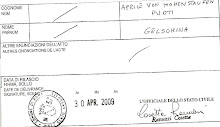


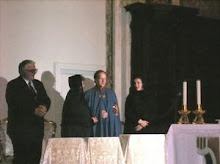
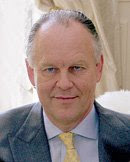



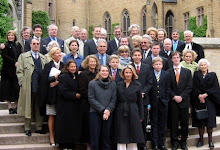





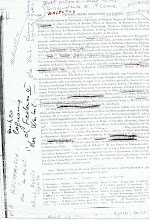
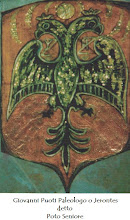






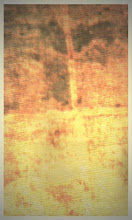
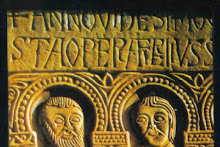
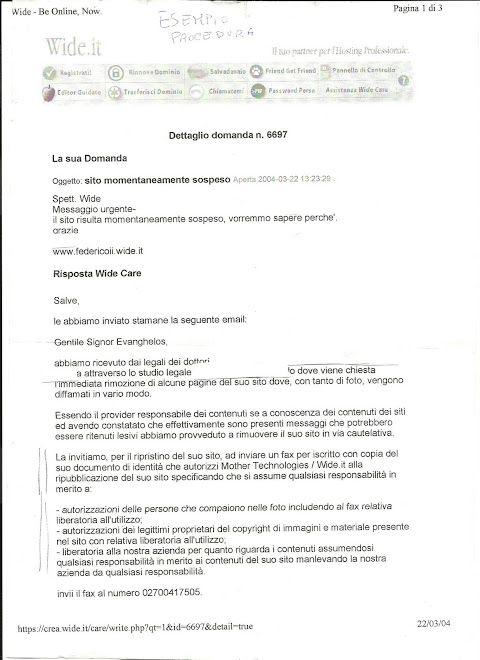.jpg)
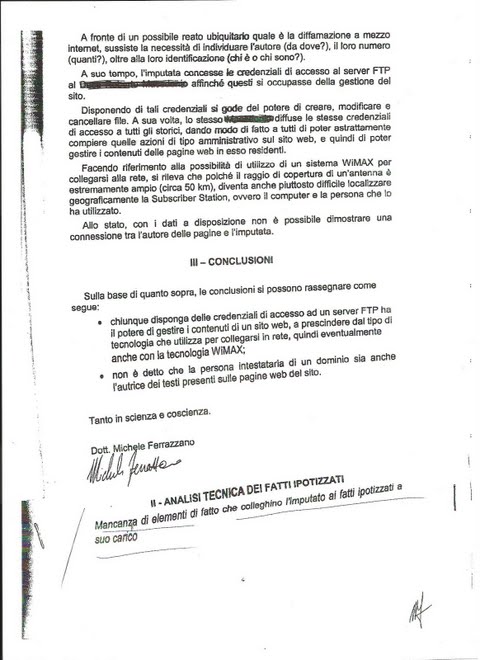.jpg)





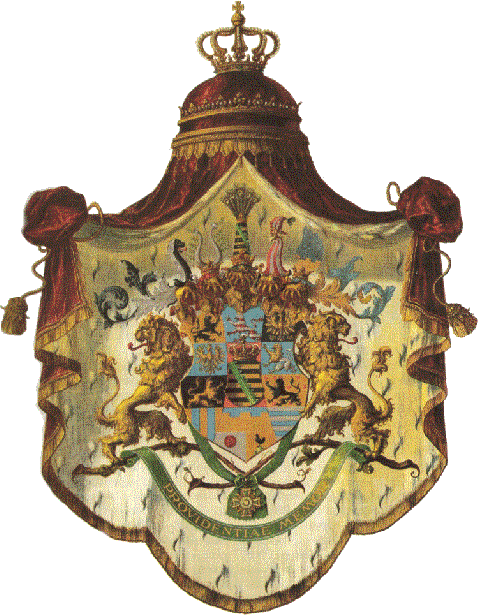
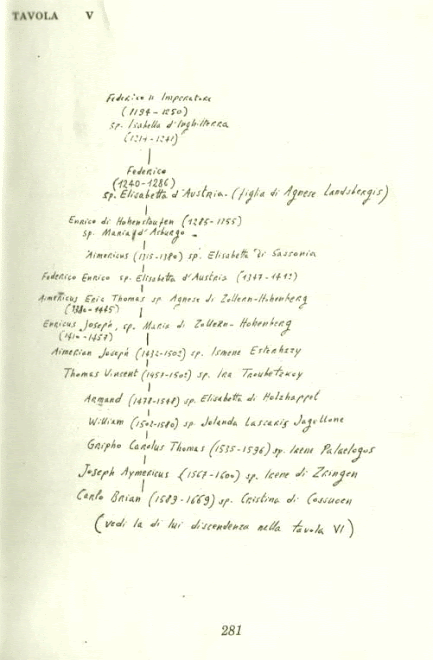sposa+Gripho+Carolus+Thomas+Stauferis.gif)
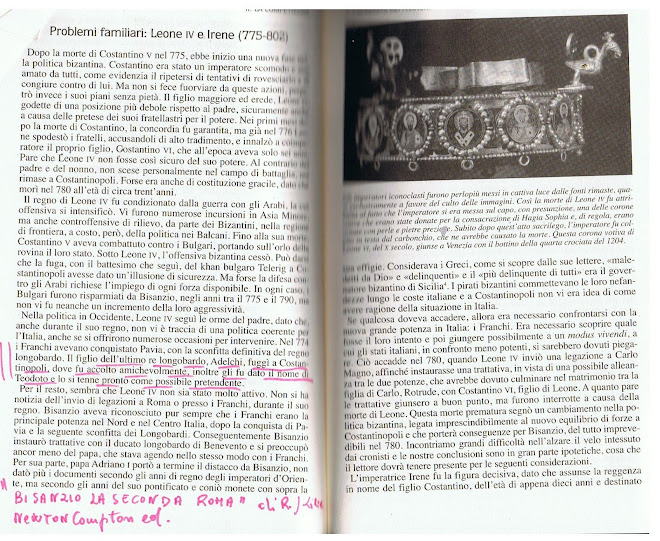


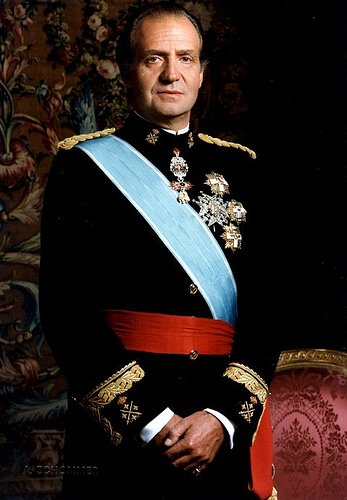

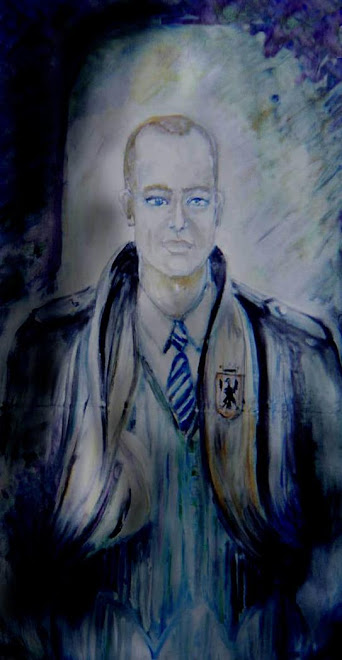
.jpg)


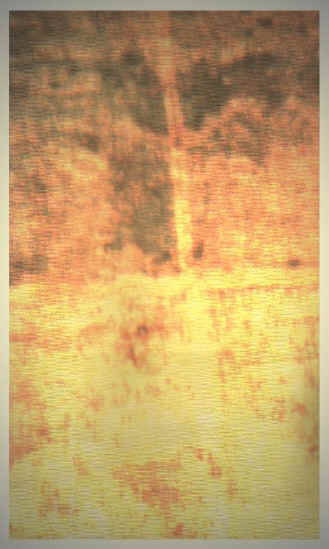

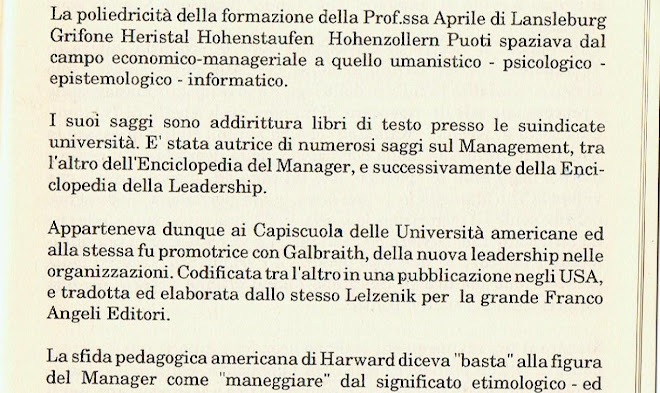
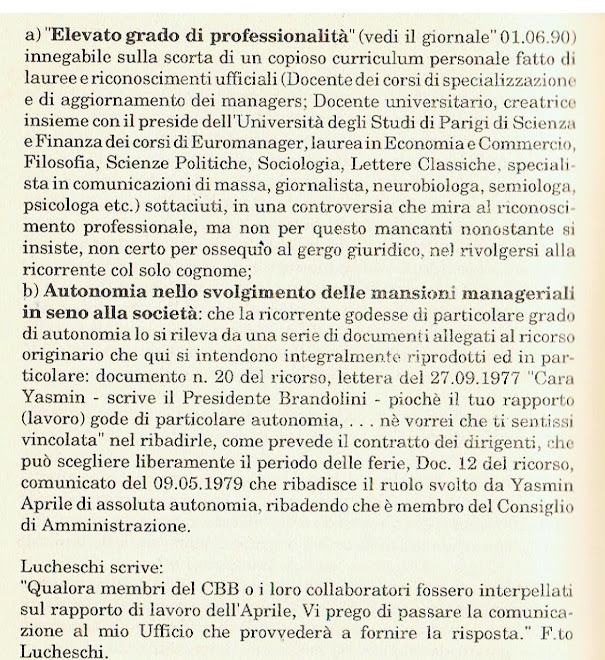

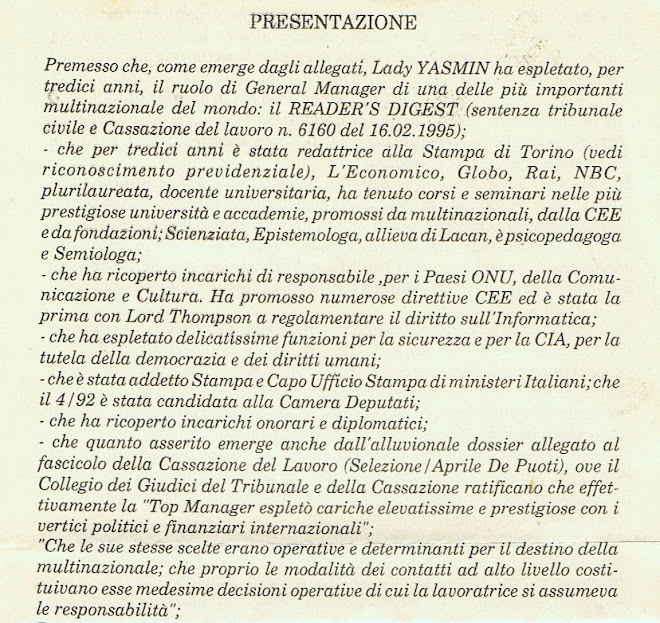
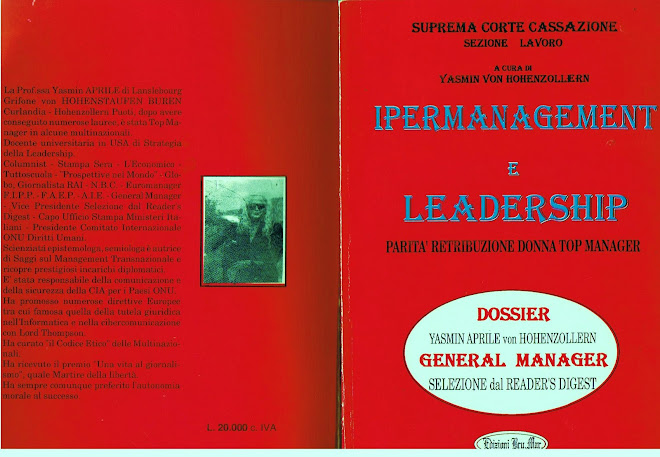


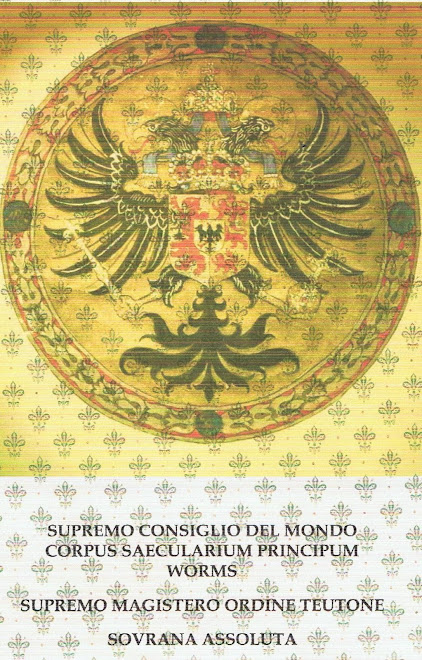

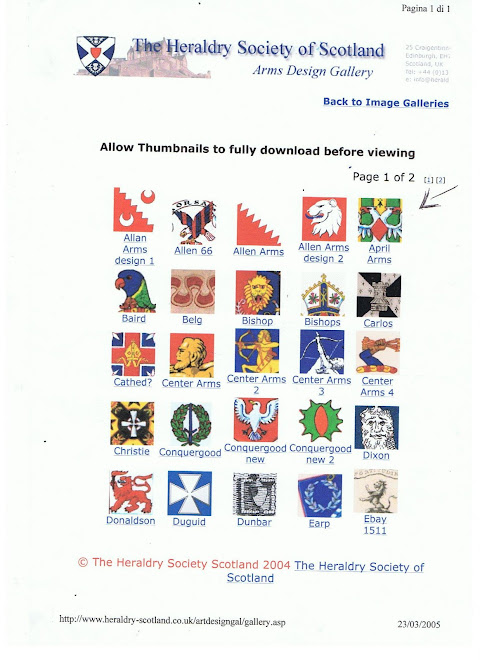

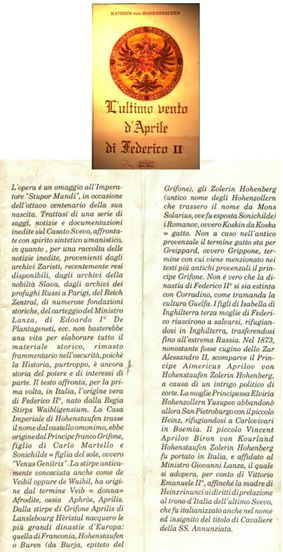





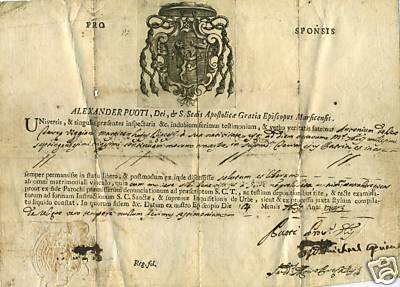

.jpg)
